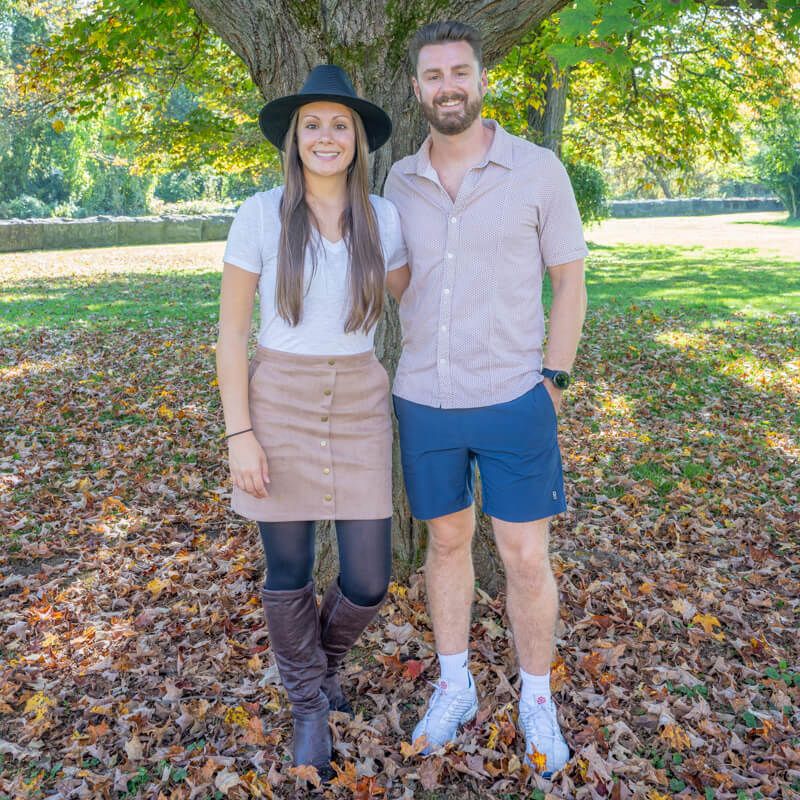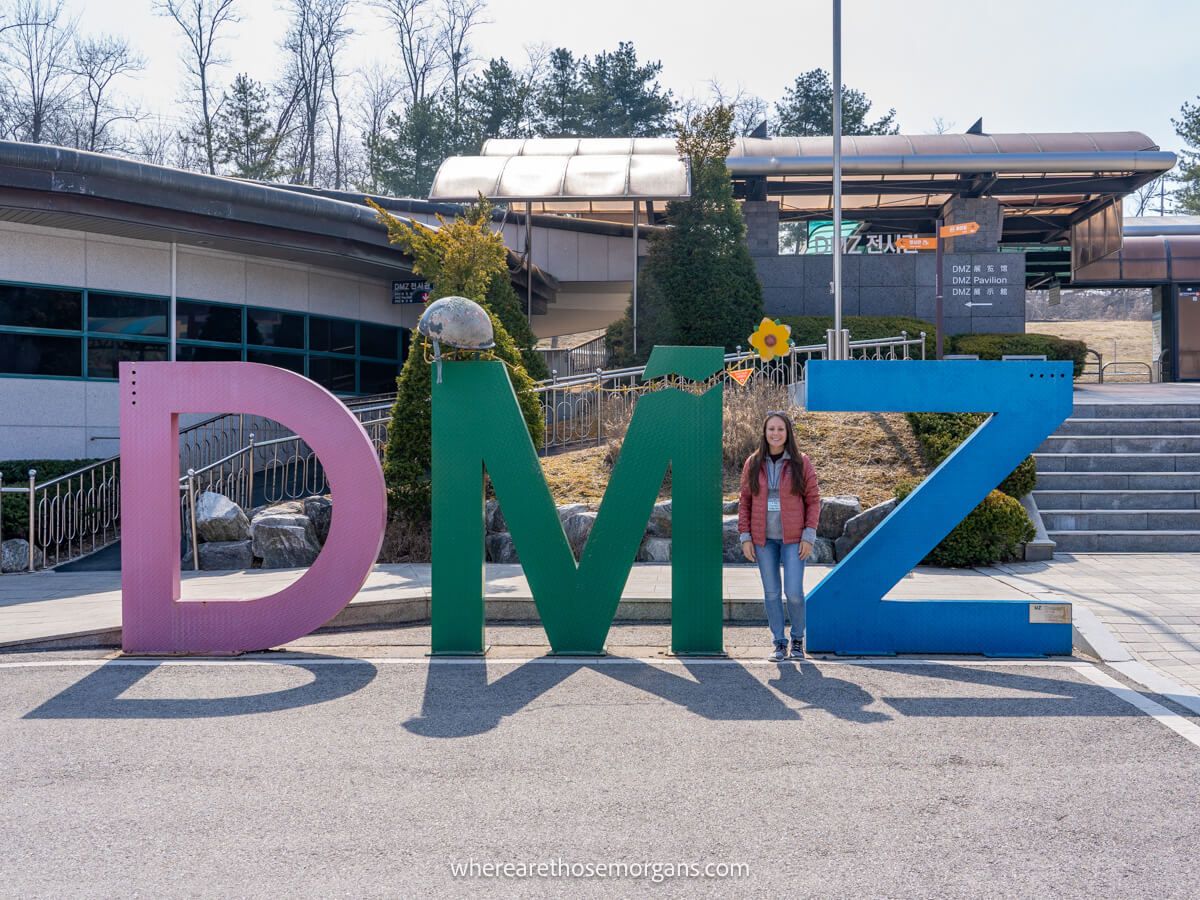A typical DMZ tour includes Imjingak Park, the 3rd Tunnel and Dora Observatory. Most tours last 6-10 hours and you can choose additional options such as the gondola, suspension bridge or JSA. Our review will highlight the difference between each tour option so you don’t miss out.
In this guide, we’ll tell you everything you need to know about booking a tour of the DMZ including pros and cons from our experience.
Disclosure: We paid for our own DMZ tour and this is not a sponsored post.
Our DMZ Tour Experience
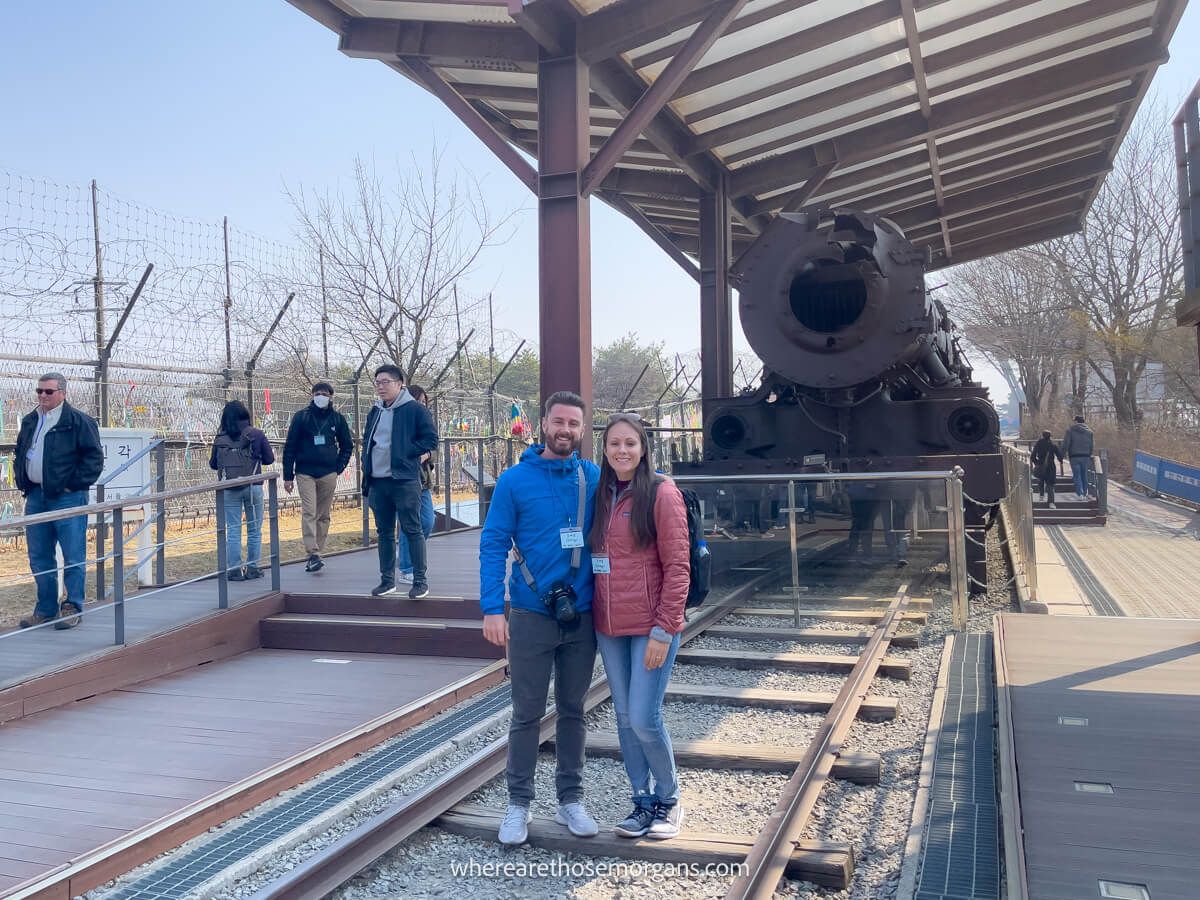
We spent 14 days exploring Seoul in March 2023 and during this trip, we personally went to the DMZ. Visiting the DMZ was at the top of our bucket list so we booked a tour for the first full day we were in Seoul. It was the best way to start our trip!
But we ran into a few problems during our tour. So our detailed and honest DMZ tour review will tell you everything you need to know including a step by step account of our experience. Depending on what you want to see, you might need to book a different tour and we want to help you make the most of your trip. Read more about us.
What Is The DMZ?
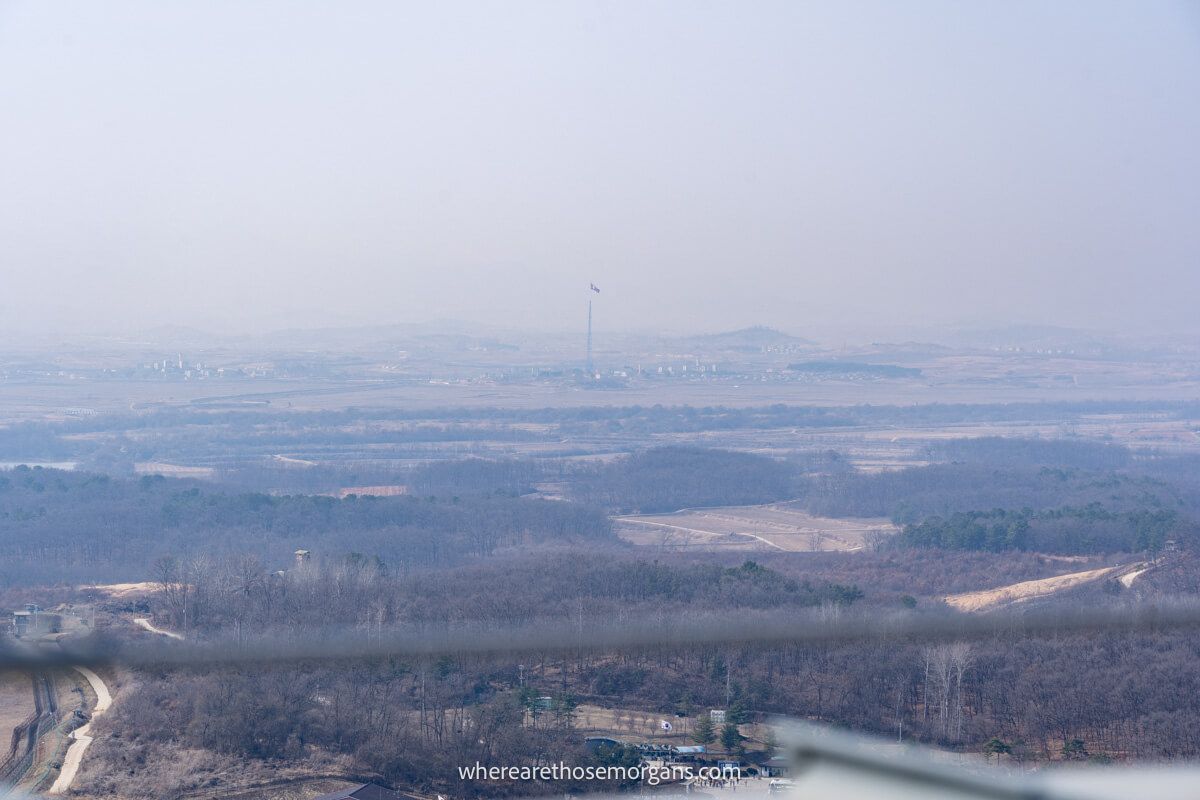
The DMZ or Demilitarized Zone is one of the most notorious and heavily fortified strips of land in the world running between North and South Korea. Additionally, the Military Demarcation Line (MDL) is the official land border between the two countries. On either side of the MDL, you’ll find the official DMZ area.
After the Korean war, an Armistice Agreement was signed on July 27th, 1953 formally ending the war. This was one of the longest negotiated armistice in history spanning over two years and 158 meetings. As part of this agreement, North Korea and South Korea were to remain separate and each country kept similar territories they occupied before the war.
Both the DMZ and DML were created from the 1953 Armistice Agreement. This buffer zone spans 4km wide and 250km in length along the 38th parallel between the two Korean countries. Soldiers from each county patrol their respective sides.
While the DMZ is one of the most heavily guarded borders on the planet, there is no threat to visitors or civilians. The DMZ is still considered to be an active war zone, but it has now become a place of peace and is safe to visit making the DMZ one of the best day trips from Seoul.
It’s also interesting to note, travelers with American and South Korean passports are not allowed to enter North Korea. So for many, a tour of the DMZ is the closest they will ever come to this very secluded and secretive country.
The Joint Security Area
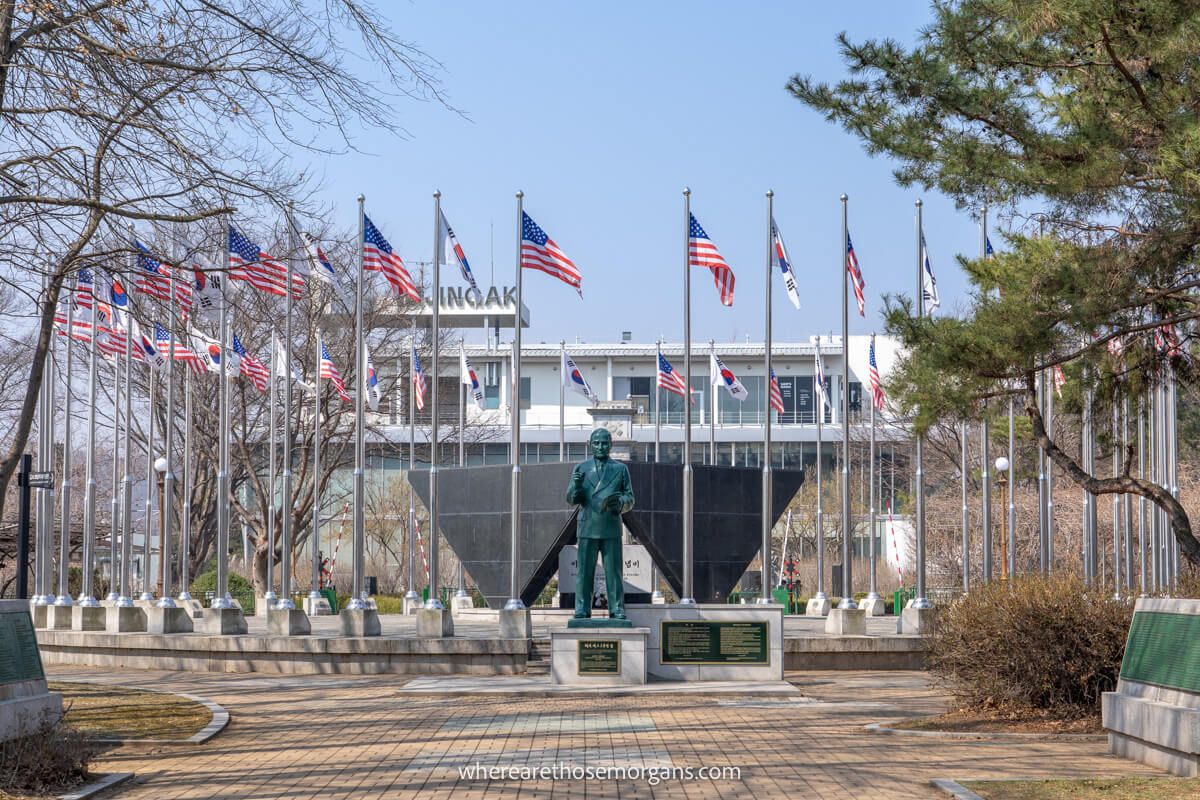
If you want to book a tour, you can visit both the DMZ and the Joint Security Area (JSA). Inside the Demilitarized Zone, you’ll find the former village of Panmunjom which is now known as Truce Village on the western coast of the peninsula along the Military Demarcation Line.
Located near this village, the JSA is the closest point to North Korea within the Civilian Controlled Zone. This is where North and South Korean soldiers stand face to face.
The JSA has several blue barracks that have historically been used for negotiations between the two nations. Supported by the United Nations Command Military Armistice Commission (UNCMAC), the JSA is now considered to be a neutral place. You can visit as part of a tour and visitors are allowed to enter one of the Military Armistice Commission conference rooms.
In 2019, Donald Trump was the first U.S. President to set foot on North Korean soil. He met with Kim Jong Un for about an hour and then both leaders stepped back into South Korean territory where they were greeted by South Korea’s President, Moon Jae-In. If you visit the JSA, you’ll be able to see where this historical meeting took place.
However, the JSA is heavily regulated by South Korea and the US military. Unfortunately, no visitors under the age of 12 can visit and there is a dress code in place. If you choose to visit the JSA, you’ll be given a 20-minute briefing by an American soldier outlining the possible dangers.
You’ll also be required to sign a waiver which absolves South Korea, the US and the UN if any incident arises. JSA tours were suspended last year in 2023 because a US soldier ran into North Korea during his tour and unfortunately, the JSA is no longer allowing tours.
Travel Tip: It might take at least 72 hours in advance to make a reservation if you plan to visit the JSA so if this is something you want to do, you will have to plan ahead.
Can You Visit The DMZ Without A Tour?
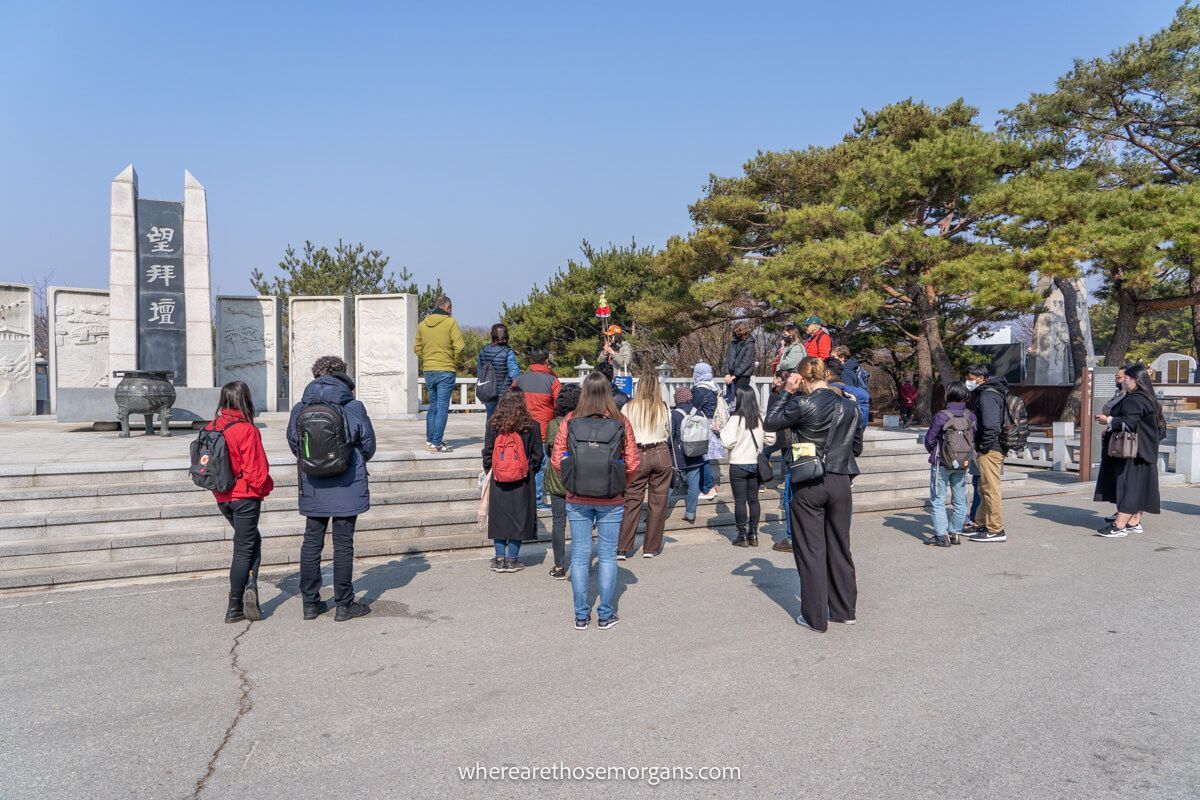
No, you can not go to the DMZ in South Korea without a tour and you must have a registered guide from an official tour company. However, you can visit Imjingak Park without a tour or a guide. This park is located just outside the DMZ and it also does not require any additional security screening to visit.
At Imjingak Park, you can ride a gondola over the DMZ line, see the Freedom Bridge, visit the National Memorial For Abductees, buy North Korean money and so much more. If you don’t want to take a tour of the DMZ, we’ll show you how to visit Imjingak Park on your own. However, we recommend you book a DMZ tour from Seoul to make the most of your South Korea experience.
READ: Best things to do at Imjingak Park
Should I Visit The DMZ Or JSA?
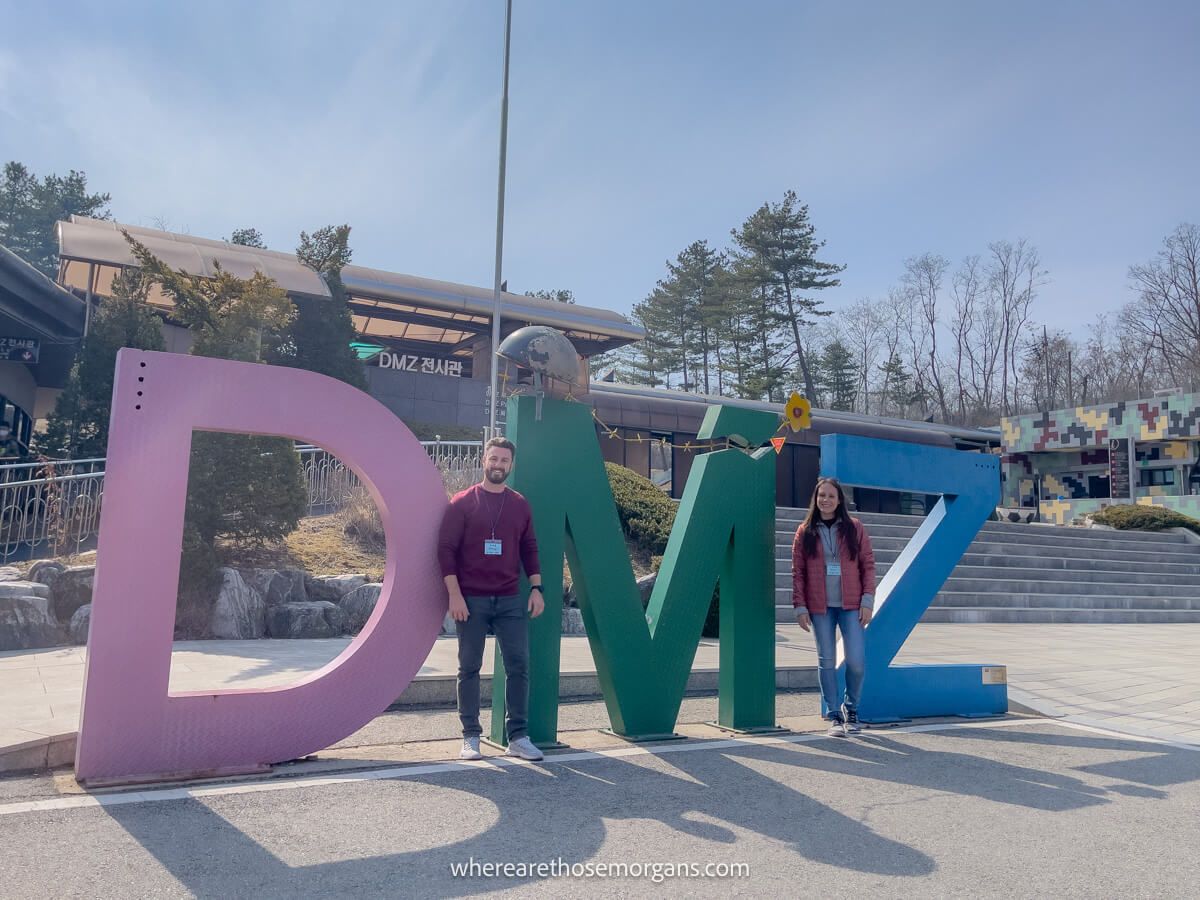
Because you can’t travel to the DMZ without a guide, many of the tours follow similar routes. However, the first decision you should make is whether you want to visit the DMZ, JSA or both.
If you choose the DMZ, you can expect to visit:
- Imjingak Park including Freedom Bridge
- The 3rd Infiltration Tunnel
- Dora Observatory
If you choose to visit the JSA, you can expect to visit:
- Camp Bonifas
- Freedom House
- Military Armistice Commission Conference Room
Then depending on how much time you have in Seoul itinerary, you can choose a half day or full day option. We chose a full day tour to the DMZ with Klook and had a great experience. Later in this DMZ tour review, we’ll give you a full walk through of our tour so you know exactly what to expect.
When we visit in March 2023, the JSA was still closed for tours due to covid, but it opened a few months later. However, the JSA closed once again in July 2023 because the US soldier ran into North Korea.
Personally, we chose the DMZ over the JSA because we wanted the best chance of being able to go on a tour. While both the DMZ and the JSA can close to tours, the JSA is a much more restricted area with high political tension so it’s often the first to close over the DMZ. If you book a JSA tour and it closes last minute, all DMZ tours might be fully booked.
Things To Know Before Booking
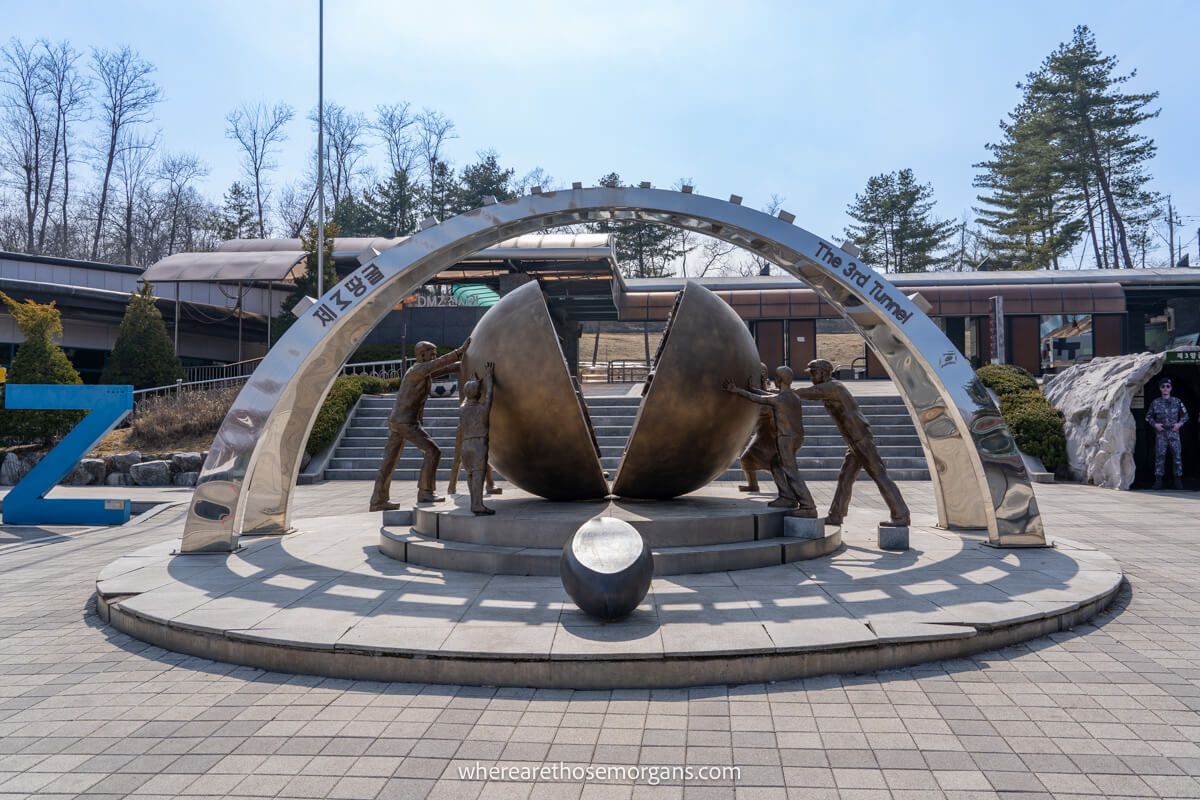
As we mentioned earlier, the DMZ and the JSA are active military zones so you can’t always expect a perfect tour. For example, the week before we took our DMZ tour, North Korea was carrying out missile testing so all DMZ tours were cancelled for a few days while this took place.
When we visited in March 2023, there was also a surge in tourism and the tickets for DMZ were extremely limited on a first come, first serve basis with timed entry. We had to move our tour time a few hours ahead to ensure we arrived early enough in the day to secure our tickets.
Travel Tip: Book your DMZ trip at the beginning of your Seoul itinerary so if your tour is altered for any reason, you have a few days of buffer room to reschedule if needed.
Two important things to know when booking your DMZ / JSA tour:
- You must bring your passport (or ARC, local Alien Registration Card for South Koreans)
- Dress code is important when visiting the JSA
Dress code is enforced at the JSA because North Korea has previously used photos of carelessly dressed tourists as propaganda suggesting how poor the rest of the world is to their citizens. So if you choose to visit the JSA, you’re not allowed to wear revealing or suggestive clothing such as:
- Ripped or faded jeans
- Sleeveless shirts or tank tops including a revealing midriff
- Shorts and miniskirts
- Clothing with military print
- Anything that could suggest your nationality (like a national flag)
- Workout gear
Overall, we found it best to dress appropriate yet casual. Keep in mind this is a geopolitical area so taking the time think about your outfit shows respect. If you’re fully covered and casually dressed, you’ll be fine for your DMZ tour.
Most Popular DMZ Tour Options
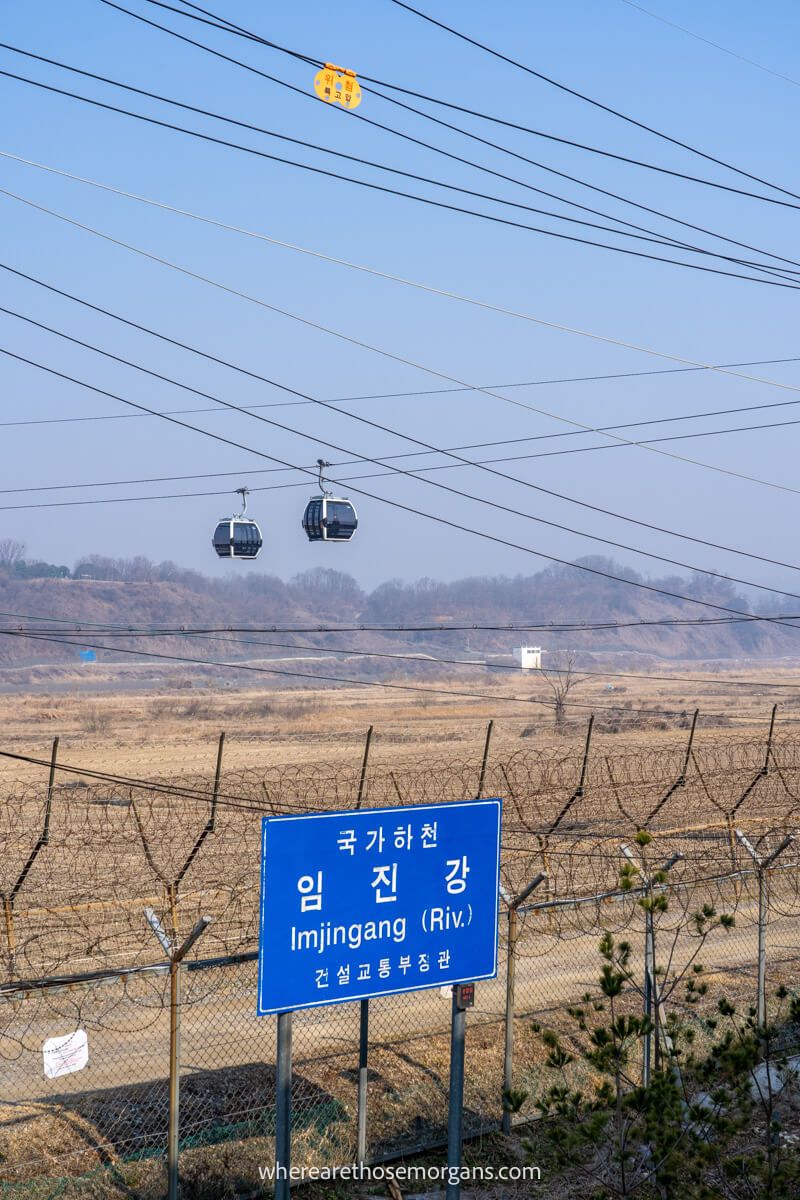
We chose to book our DMZ tour through Klook because they offer some of the best deals. Each tour company varies in cost depending on time of year so always check prices before booking.
Klook:
- Demilitarized Zone (DMZ) Tour from Seoul – Chinese, English or Japanese speaking guide with admission to attractions and optional suspension bridge (this was the tour we booked).
- DMZ Adventure Tour – 9 hour tour with English or Korean speaking guide with suspension bridge and boat voyage
Get Your Guide:
- South Korea DMZ Tour Option – Half or full day tour option with I LOVE SEOUL TOUR including an English speaking guide
- From Seoul: DMZ Guided Day Trip – Another half or full day tour option (6-9 hours) with Seoul N Tour and English speaking guide
Viator:
- Korean Demilitarized Zone (DMZ) Tour – 6 hour tour with SEOUL CITY TOUR CO. including Tongilchon-gil, the unification village
- Private DMZ Tour Option – Experience a 9-10 hour private tour including Gamaksan Chulleong Bridge or Majang Lake
JSA Options:
- DMZ JSA with VIP Travel – Limited seats and may sell out quickly
- Paju JSA + DMZ One Day Bus Tour – A very popular option by Klook
- JSA Tour with Viator – Sometimes unavailable so check before your trip
Booking Tip: Make sure you carefully read the description for each tour option and it includes what you want to see.
Our DMZ Tour Walkthrough
Even if you choose to visit both the JSA and DMZ, you’ll visit most of the places we did during our tour. The main difference is you’ll have less time at each location. Here is what we experienced on our full day tour (8:00am – 6:00pm) of the DMZ:
1. Booking And Tour Departure Times
The tour we booked with Klook offered an 8:00am or 10:00am departure time. We chose the 10:00am time slot. But we learned to be flexible because we received a phone call and text from our tour guide the day before asking if we could start earlier in the day at 8:00am.
Unfortunately, when we visited Seoul, the DMZ was still working on a limited number of tickets per day on a first come first serve basis. So we potentially would not get tickets if we arrived later in the day. Our tour started around 8:00am and we were picked up by private car in front of our Seoul hotel. The driver was hilarious and he dropped us off at the bus where everyone else was waiting.
2. The Bus Ride
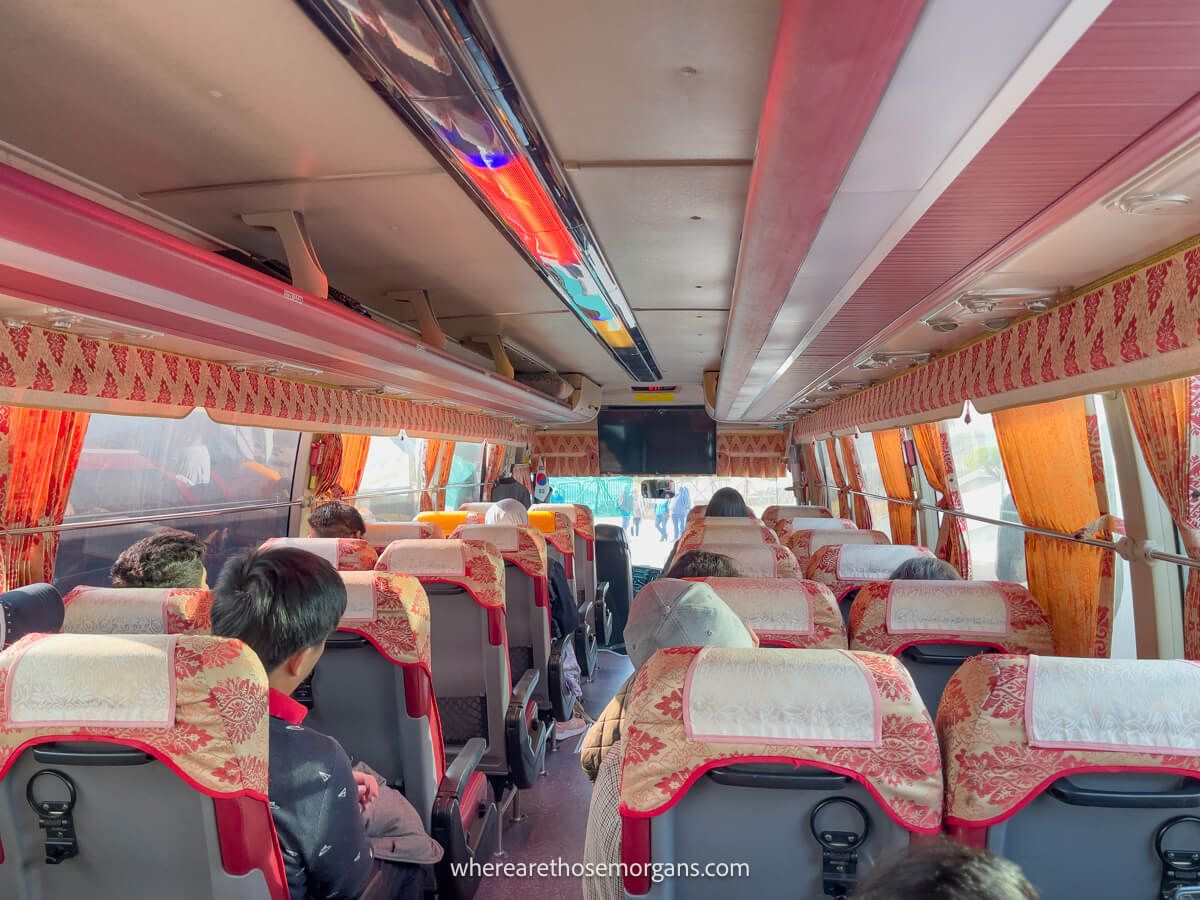
Our DMZ tour group met outside Hongik University Station. Once everyone was accounted for our tour guide, Spring, introduced herself and told us about the plan for the day. Because the DMZ was limiting tickets due to an influx of visitors, she had to secure the tickets and this was her first priority when getting to Imjingak Park.
The bus ride from Seoul to Imjingak Park was about 1 hour and 30 minutes with traffic. During the drive, Spring spoke about numerous things including the history of South Korea, what we could expect for the day and the current situation at the DMZ.
Travel Tip: Your passport is required to visit the Third Infiltration Tunnel and the Dora Observatory.
3. Imjingak Park
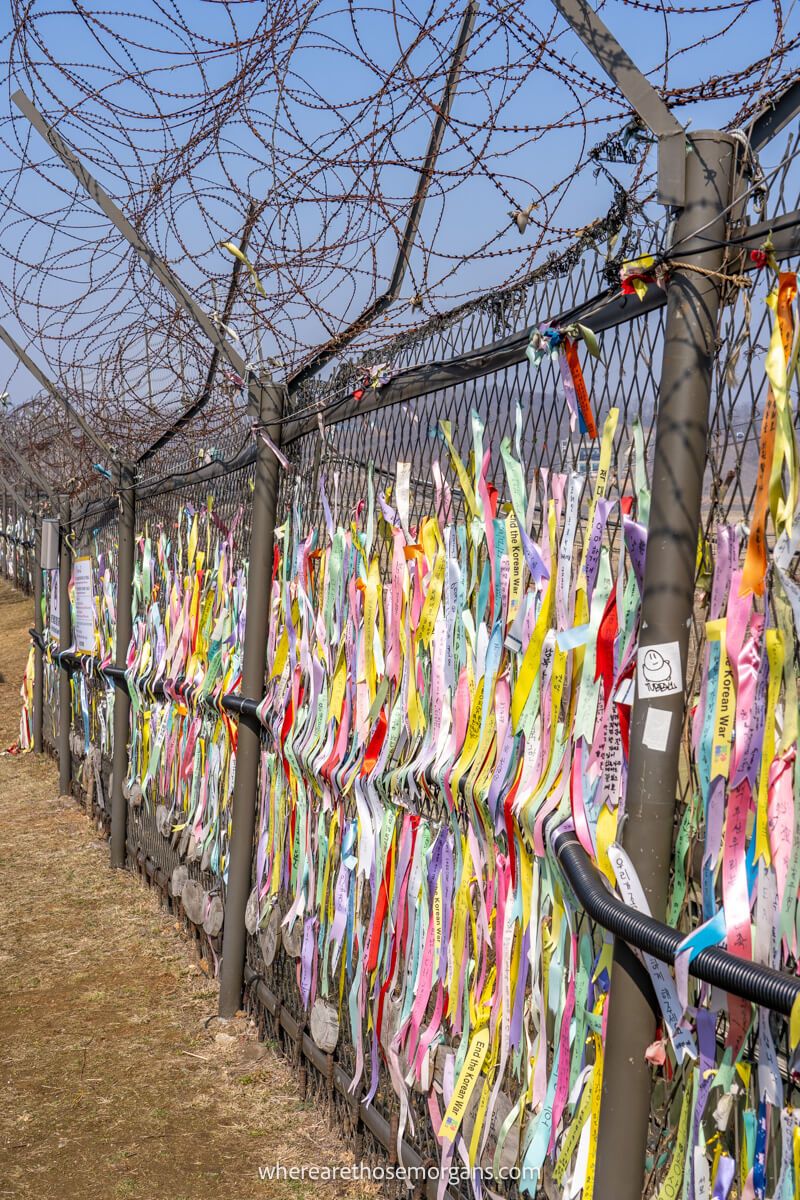
Once at Imjingak Park, Spring got in line for our DMZ tickets and we had a little bit of time to look around the area ourselves. If you’re hungry, there are many food options including a few local stalls, Dunkin Donuts and burgers.
Luckily, Spring secured our tickets and our entry time for the DMZ was 12:00pm. So we had an additional few hours to explore Imjingak Park which was not part of the original itinerary. This was actually a blessing in disguise because we now had a few hours to see as much as possible. Spring led us around to several of the important areas and explained their significance.
We then had more free time to visit the rest of the park on our own. Personally, we thought Imjingak Park was worth visiting and to see everything, you’ll need at least a few hours. We recommend you read our guide featuring the best things to do at Imjingak Park before your visit.
4. Freedom Bridge
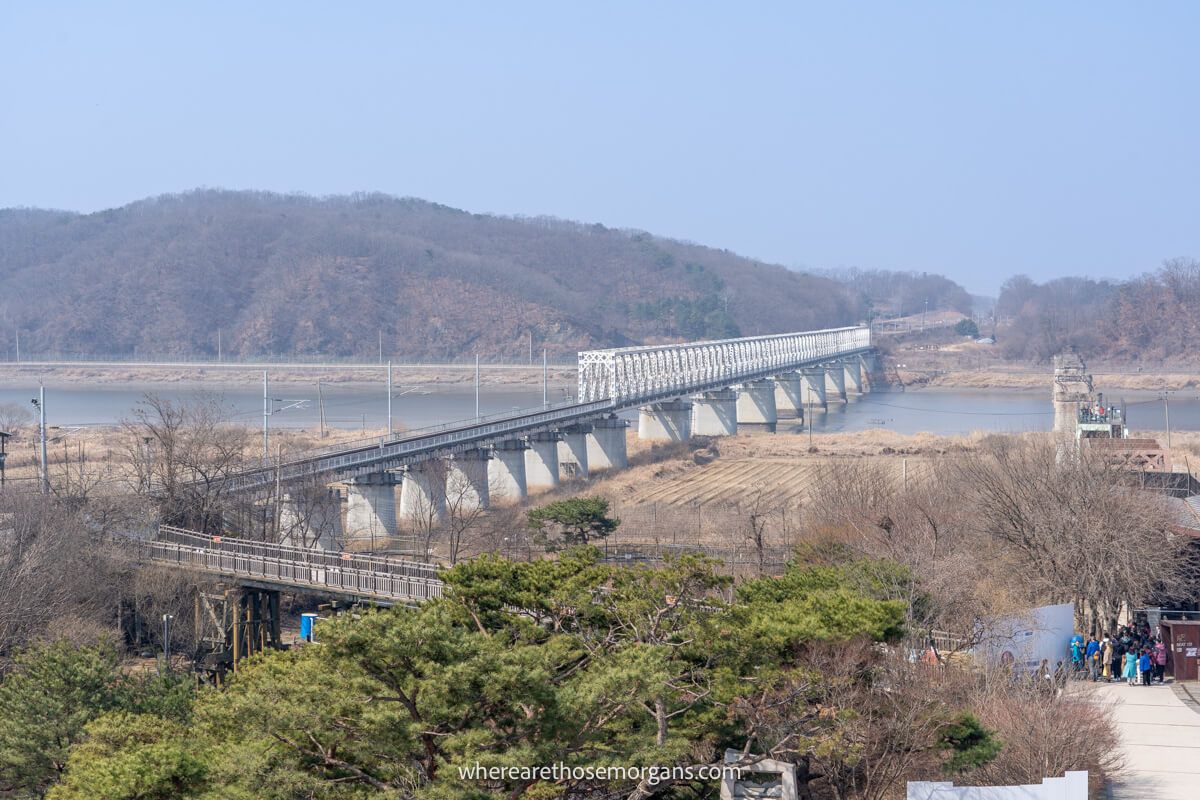
The Freedom Bridge is one of the most important symbols found at Imjingak Park. However, you won’t be able to cross it because you can only see it from a distance. This bridge was built in 1953 for the temporary purpose of exchanging 12,773 Prisoners of War (POW) from the Korean War between North and South Korea.
During this time, the POWs crossed the Freedom Bridge on foot after arriving to the bridge of the Gyeongui Line via motor vehicles. And today it represents the tragedies from the war.
5. The 3rd Infiltration Tunnel
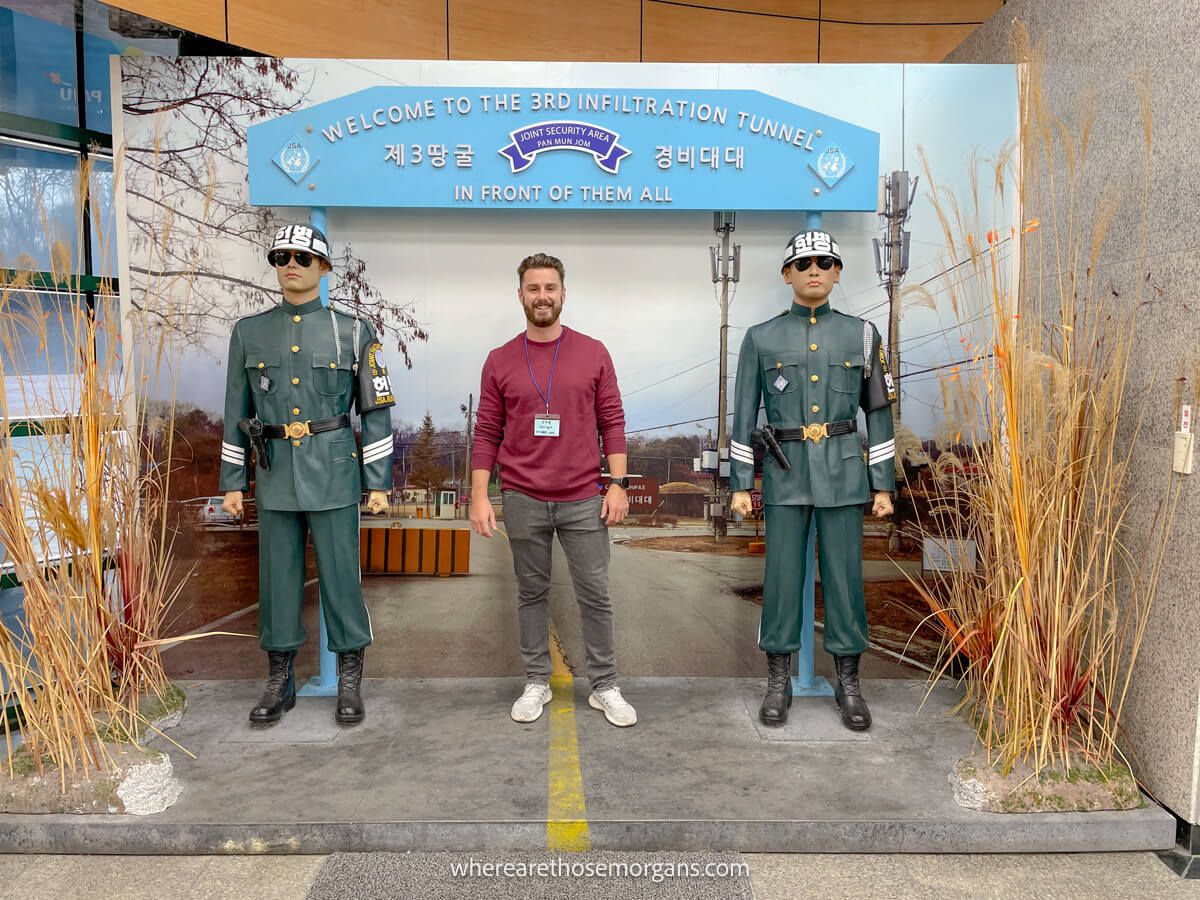
The next stop on our DMZ Korea tour was the 3rd Infiltration Tunnel and we thought this tunnel was the most interesting part of the entire tour. Sometimes also known as the Third Tunnel of Aggression, this is one of four known tunnels under the border between North and South Korea and it’s located about 50 km (~30 miles) from Seoul.
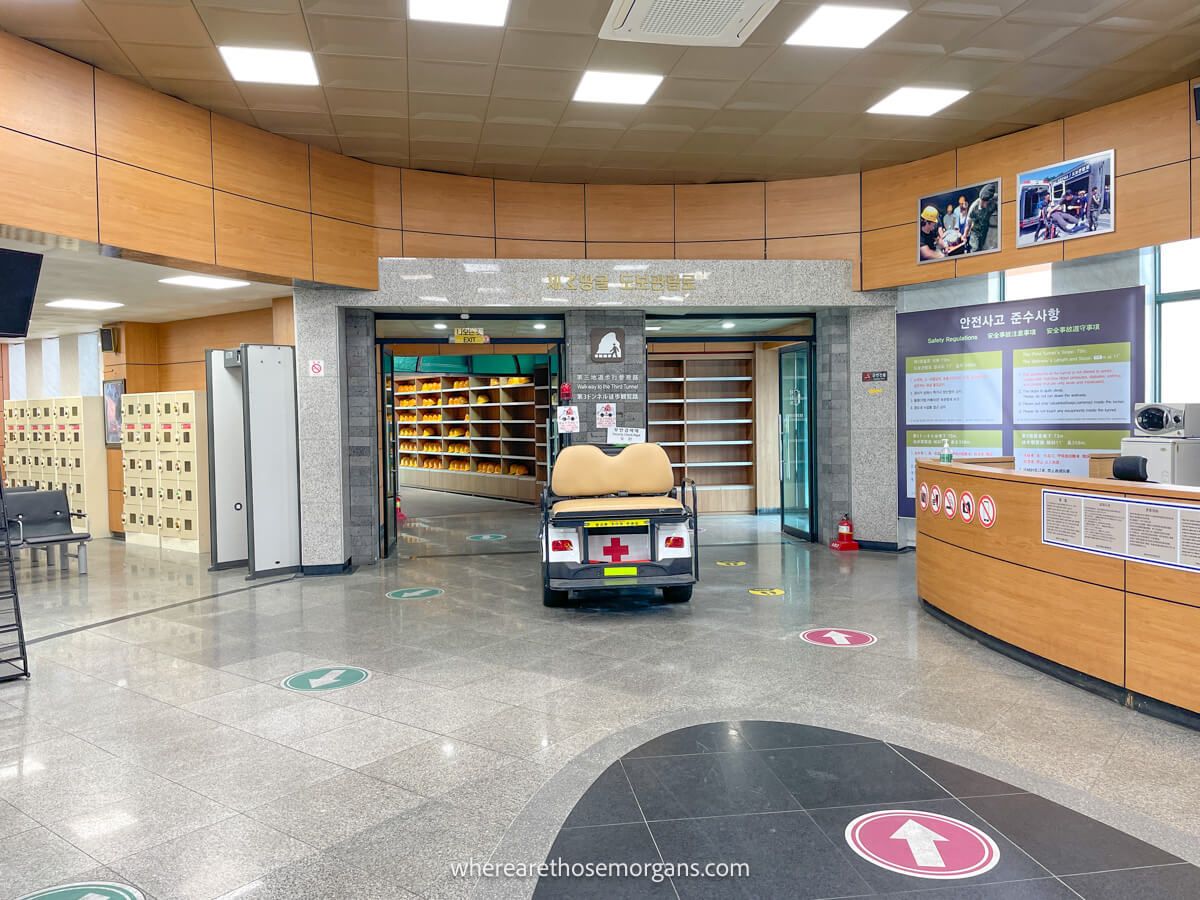
The 3rd Infiltration Tunnel was built by North Korea for a surprise attack on Seoul. This underpass could accommodate about 30,000 men per hour including weaponry. Discovered by South Korea in 1978, the 3rd Tunnel spans 1,635m in length, 2m in width and 2m in height.
During a DMZ tour, you’ll be able to walk a portion of the 3rd Tunnel. It’s a very steep incline down into the tunnel, but it has railings for support and it’s lit extremely well.
Travel Tip: There are no photos allowed in the 3rd Tunnel and you’ll be asked to leave your belongings in a locker including your phone. Please respect the rules and don’t take any photos.
6. Dora Observatory
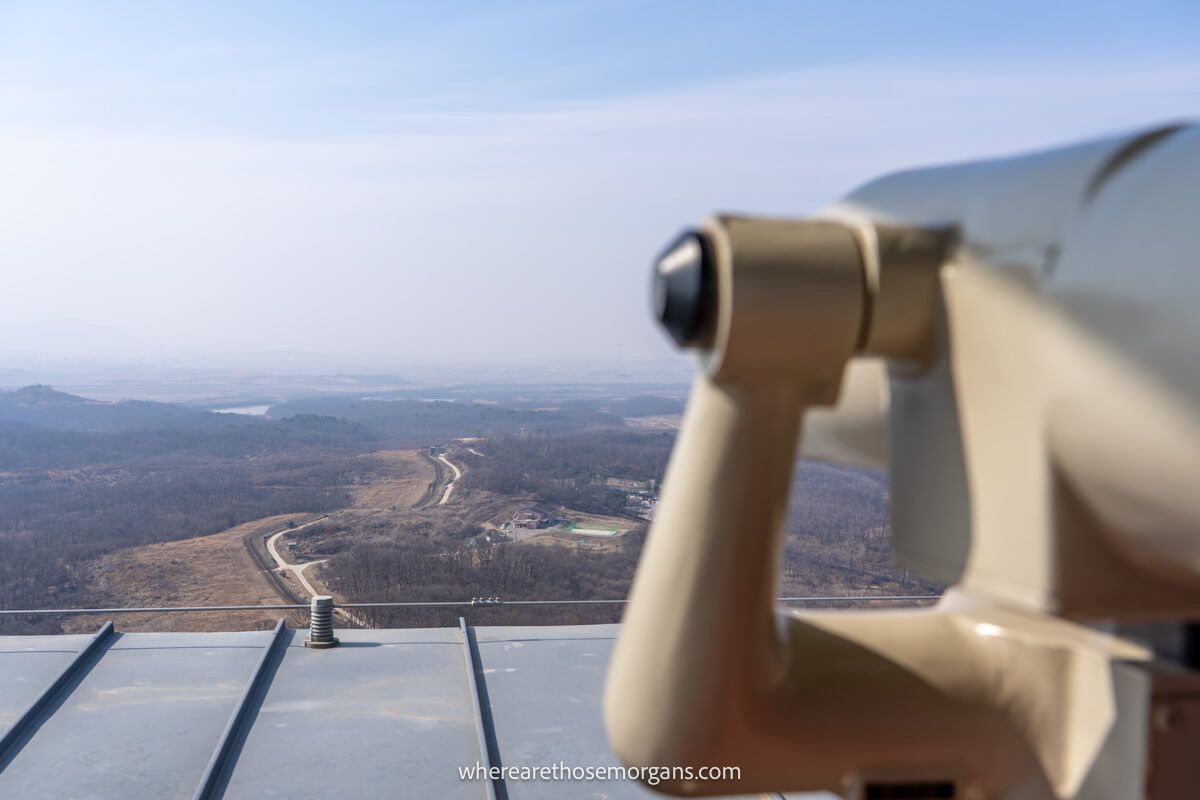
After the 3rd Infiltration Tunnel, we headed to Dora Observatory. Sitting on top of Dorasan (Mount Dora) in Paju and first opened in 1987, the observatory allows visitors to see the North Korean propaganda village as well as the city of Kaesong. This is where you’ll get to see panoramic views of the Demilitarized Zone using binoculars from the top of Dora Observatory.
We had fun playing with the tower viewers where we could easily see regions of North Korea including the flag flying high in the sky from a nearby village. This is also your chance to snap a selfie with North Korea in the background!
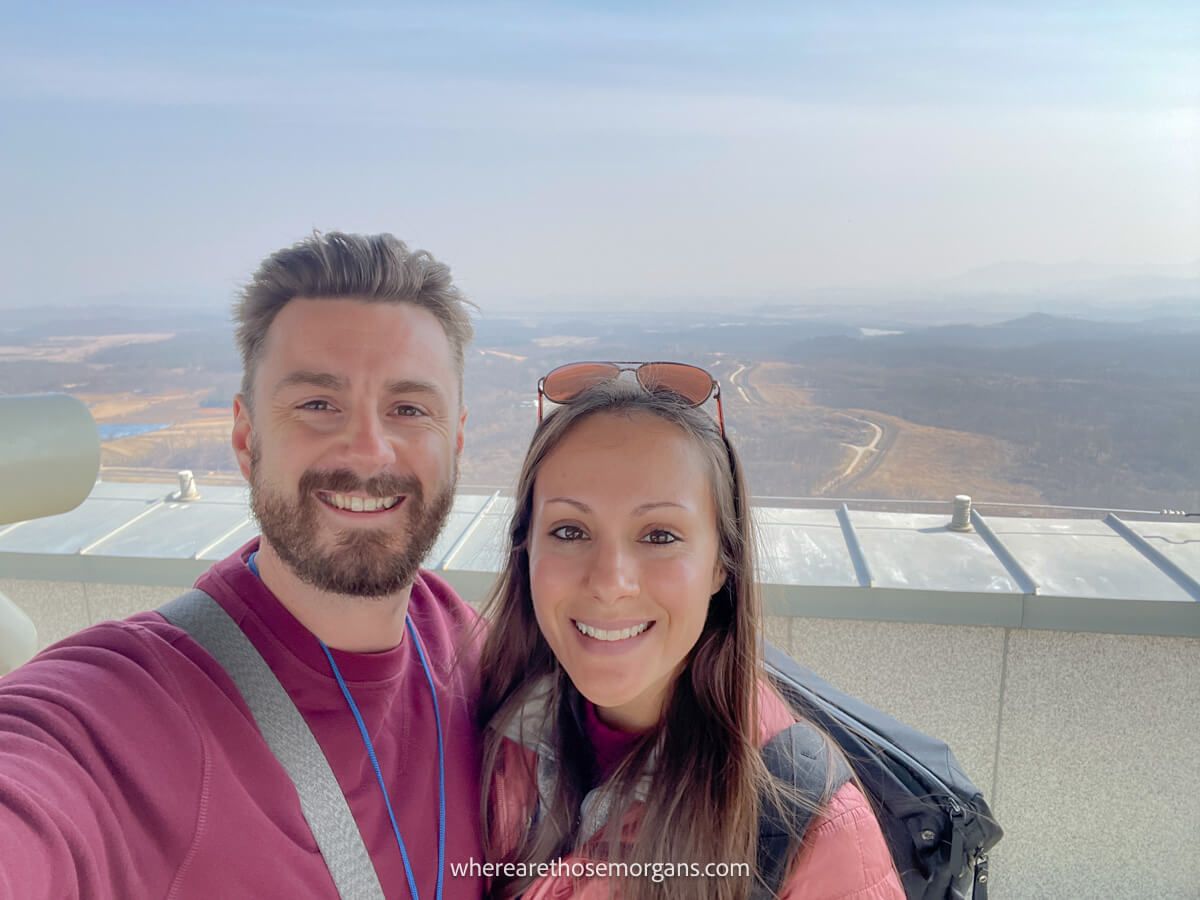
7. DMZ Souvenir Shop
The last stop on our DMZ tour was a souvenir shop and it lasted for about 15 minutes. However, this wasn’t a forced shopping experience and you could choose to stay on the bus. It was a good place to buy products such as wine, chocolate and ice cream which are produced only in the DMZ area. If you’re looking for a unique gift to take back home, this might just be it.

8. Bus Ride Back
On the bus ride home, our entire tour group was pretty tired from the long day. We were back on the road about 4:00 pm so it was almost 6:00pm by the time we arrived back in Seoul. The bus ride home was much more quieter compared to the morning. We also hit a little bit more traffic heading back into the city.
The Morgan Conclusion
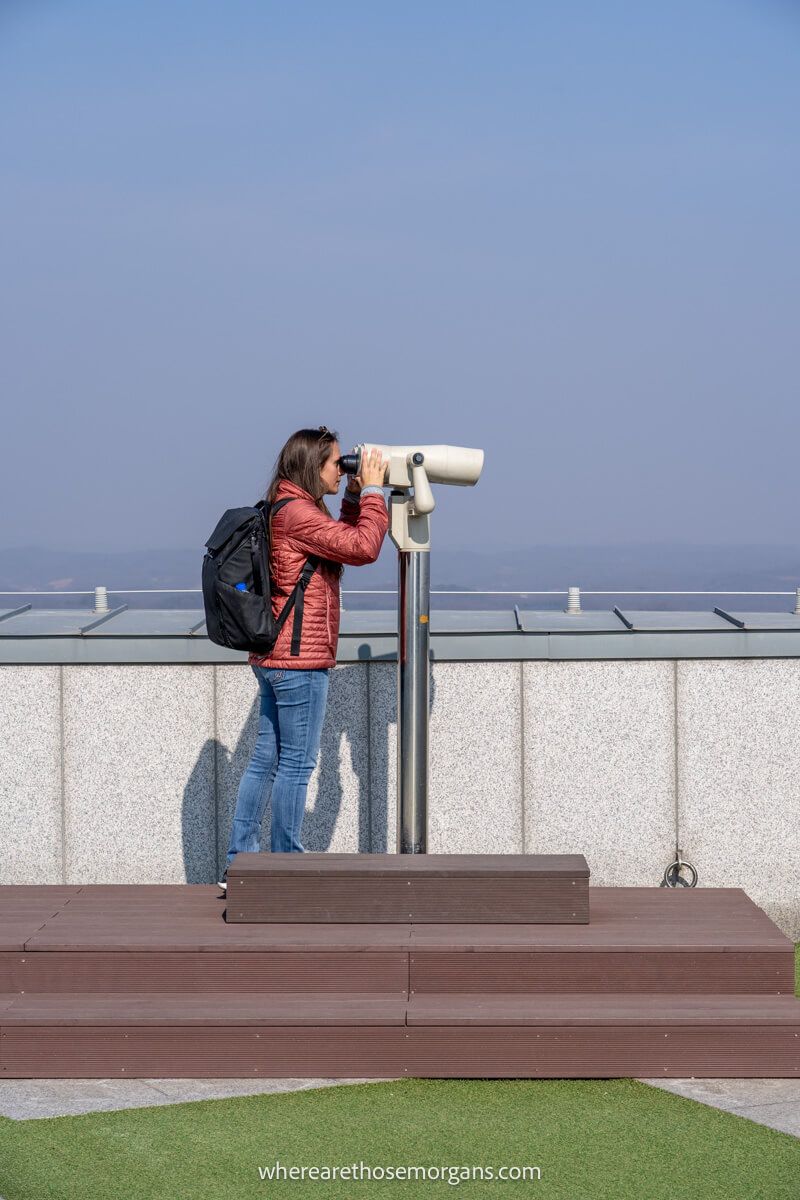
The DMZ is one of the few places in the world where visitors can experience first hand what a Cold War era looks and feels like. It’s a great reminder that we need to continually build peace wherever we go. It’s also the only place on earth where you’ll get to see a glimpse of North Korea through binoculars.
So is a DMZ Tour worth it?
Yes, the DMZ tour near Seoul is absolutely worth it because it’s one of the most fascinating places we’ve ever visited. A tour gave us a great perspective about the current climate of South Korea as well as the opportunity to learn about the history between North and South Korea. Personally, we think taking a DMZ tour is something any first time visitor to Seoul must experience.
Here is what we liked and didn’t like to help sway your decision:
Pros
- We had a very knowledgable tour guide and learned so much
- Ability to see places we couldn’t visit ourselves
- Tour bus provided so we didn’t have to worry about our own transport
- Left alone to explore Imjingak Park
- Affordable day trip option
Cons
- Tours may be cancelled last minute
- Having to wait for a tour time (unknown amount)
- The JSA has age restrictions for children
We learned so much about South Korea from our DMZ tour, we couldn’t learn elsewhere. Sometimes you need to experience things to better understand them for yourself. Our tour showed us the walls which easily separate democracy from communism still exist today and this is more important than ever as we look to the future. This tour is a very eye opening experience.
Our DMZ Tour Photos
We took many photos during our DMZ tour and this review wouldn’t be complete without sharing some of our favorites!
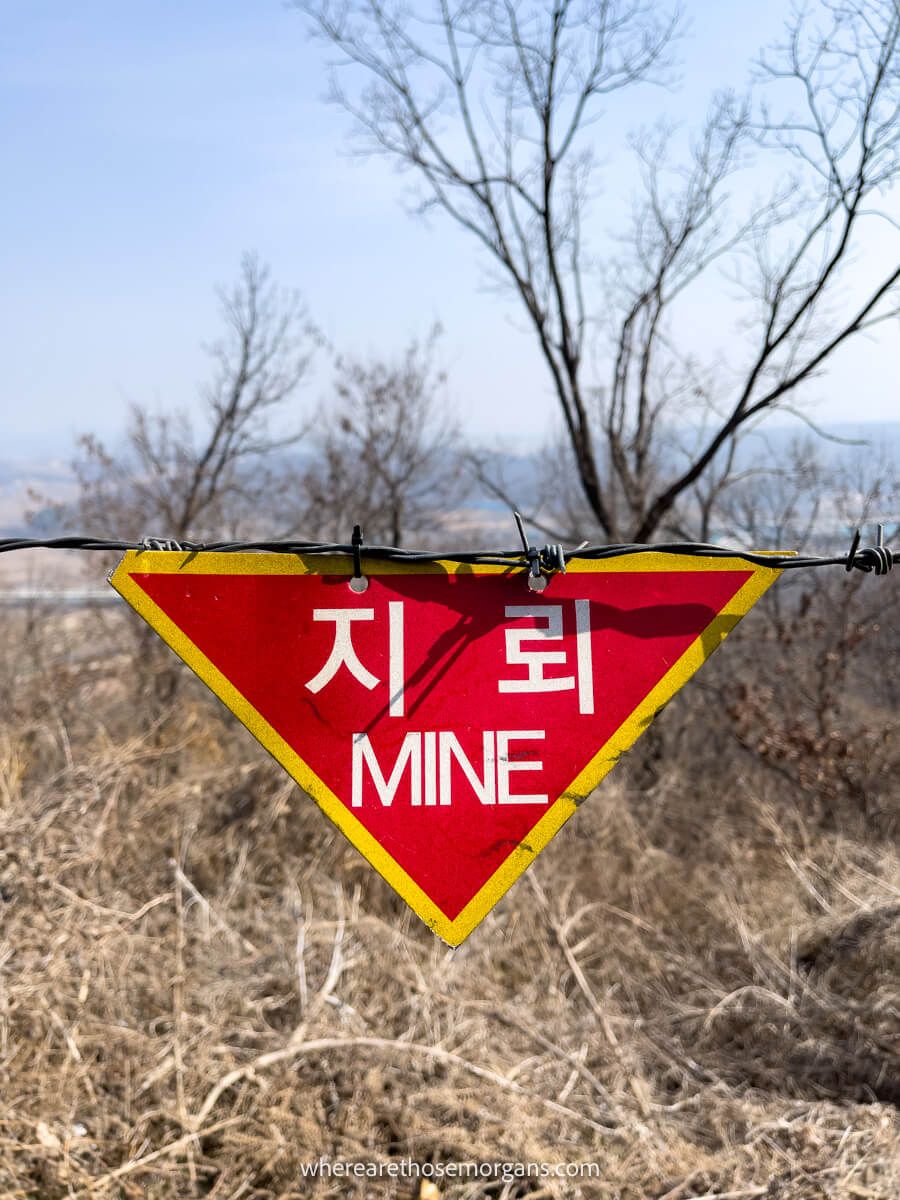
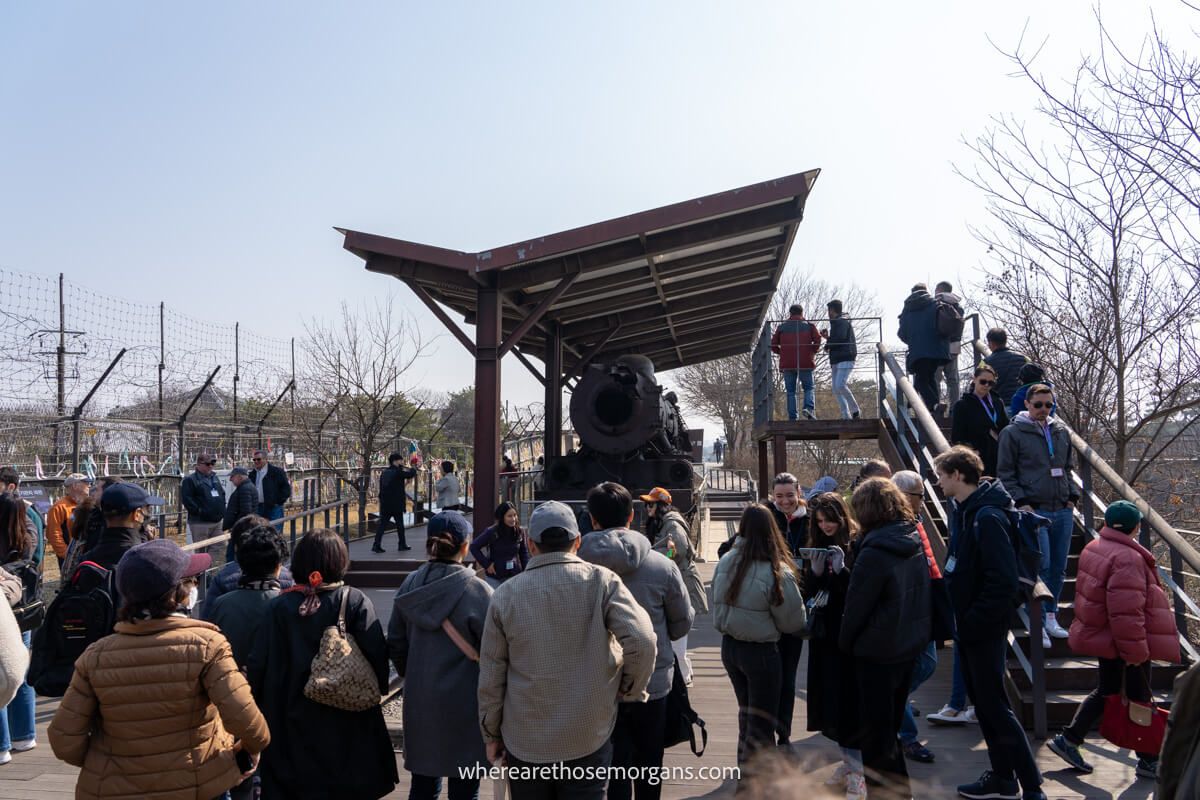
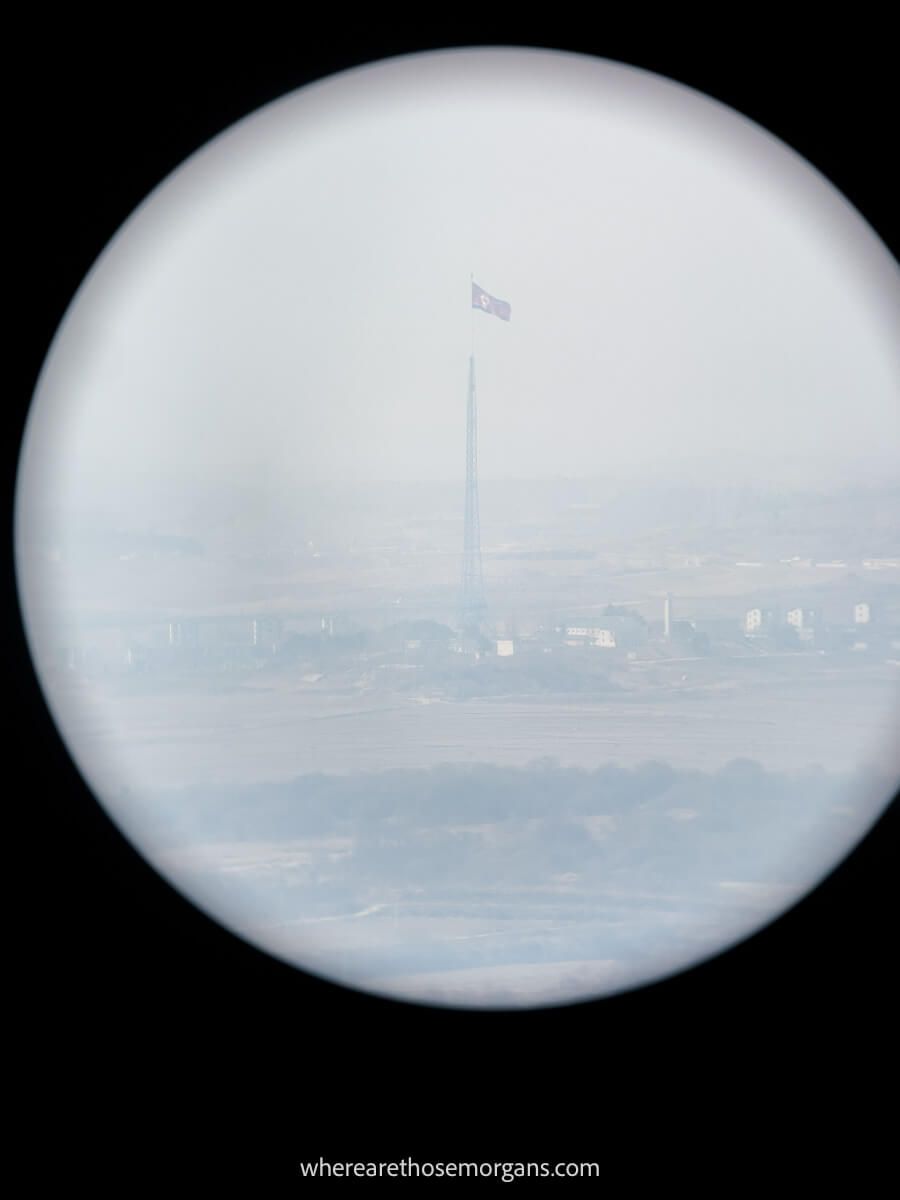
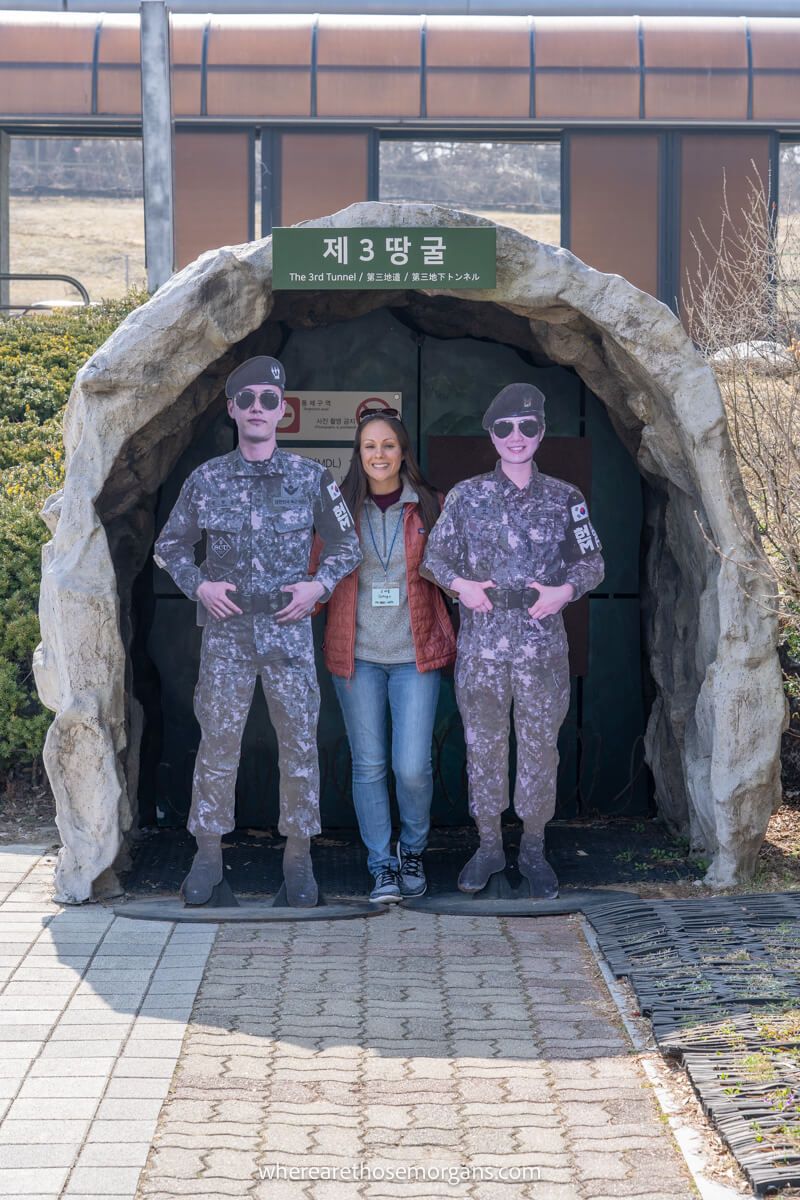
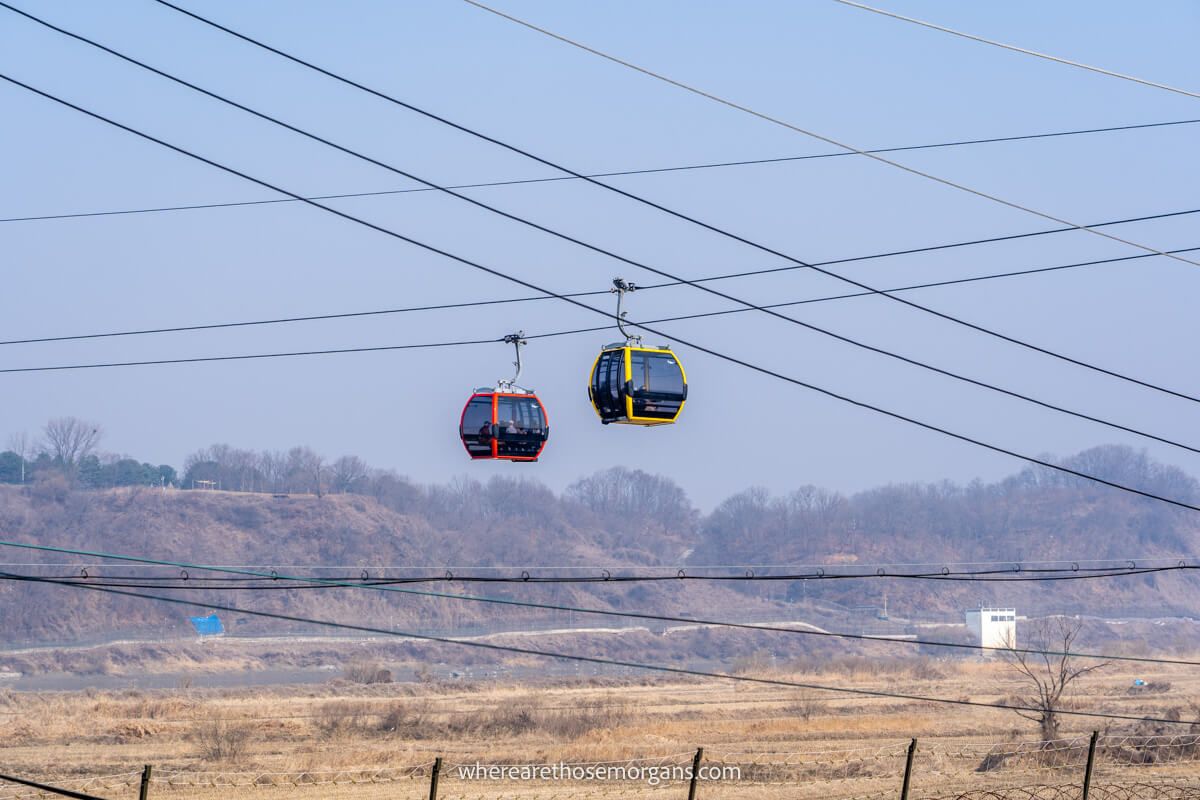
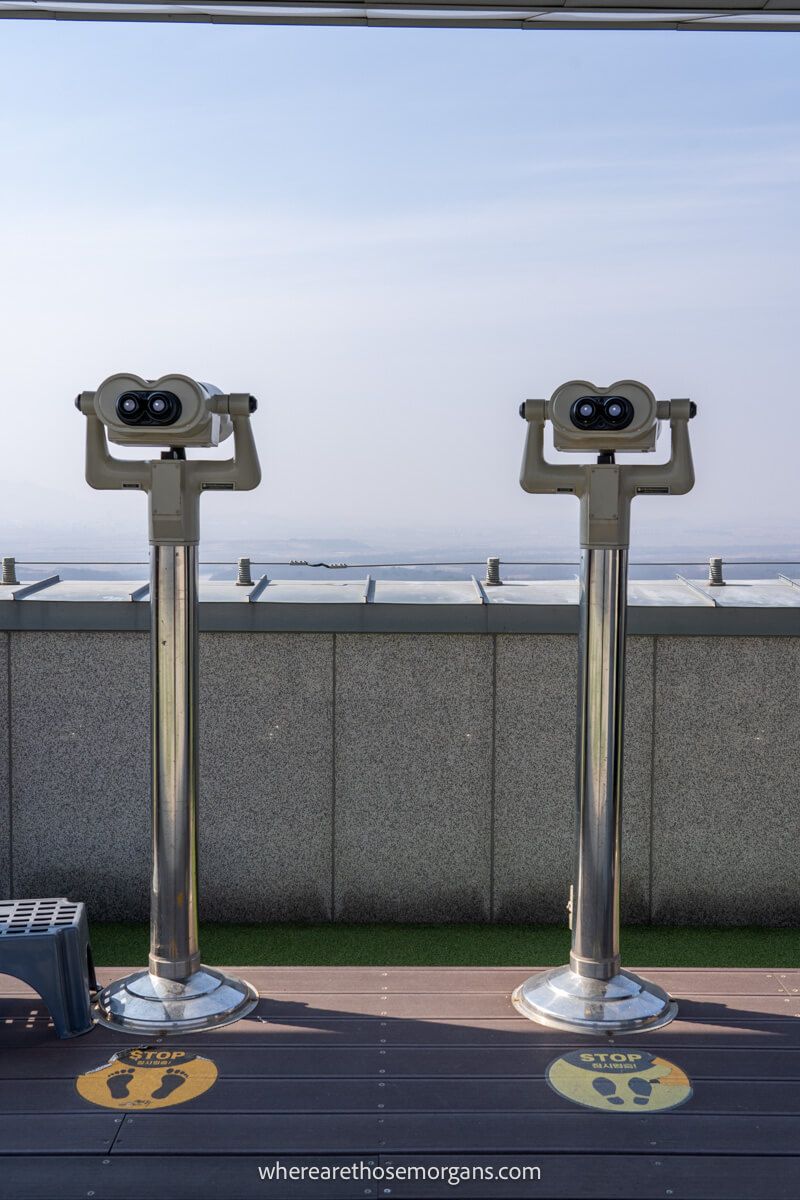
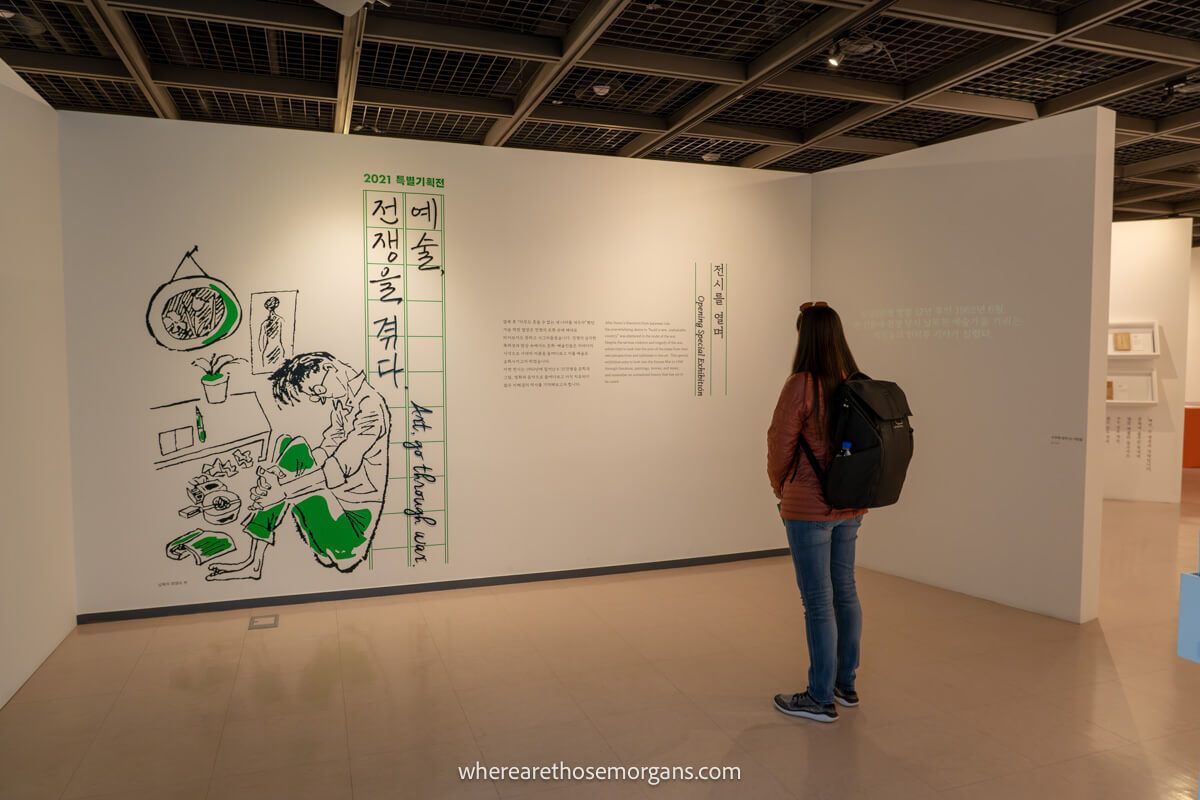
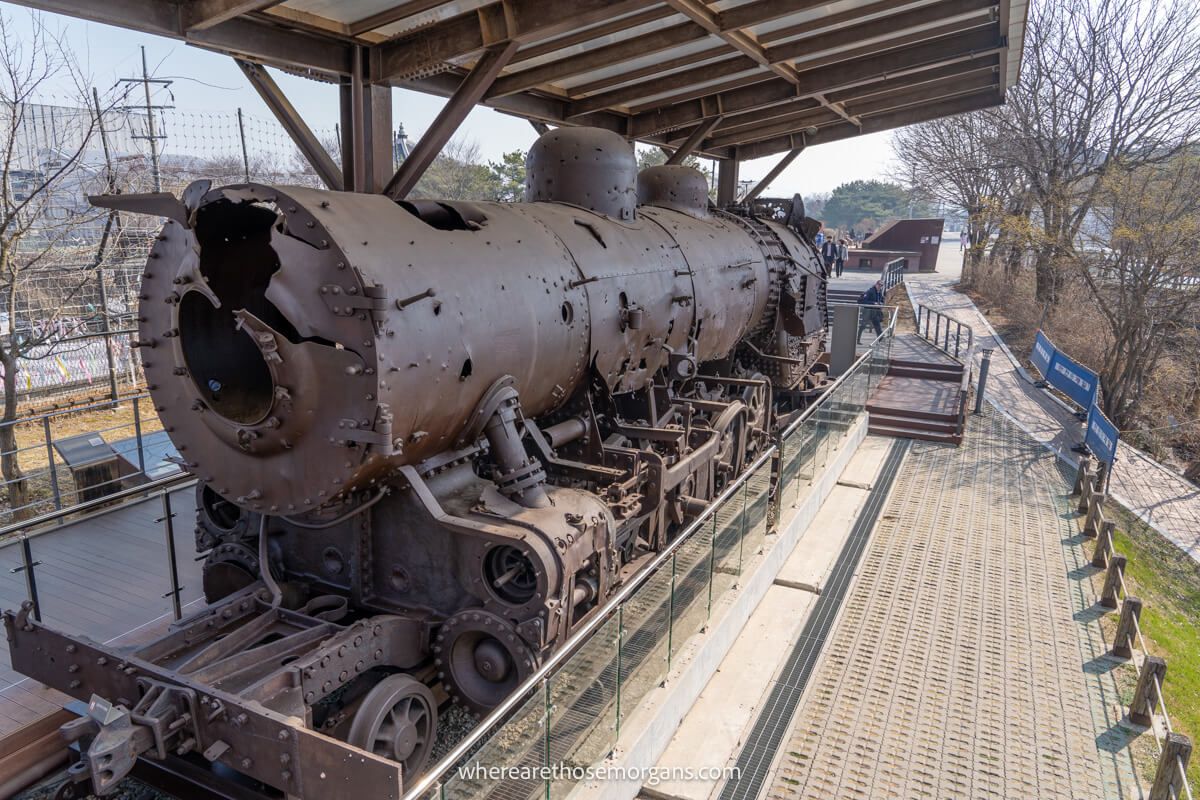
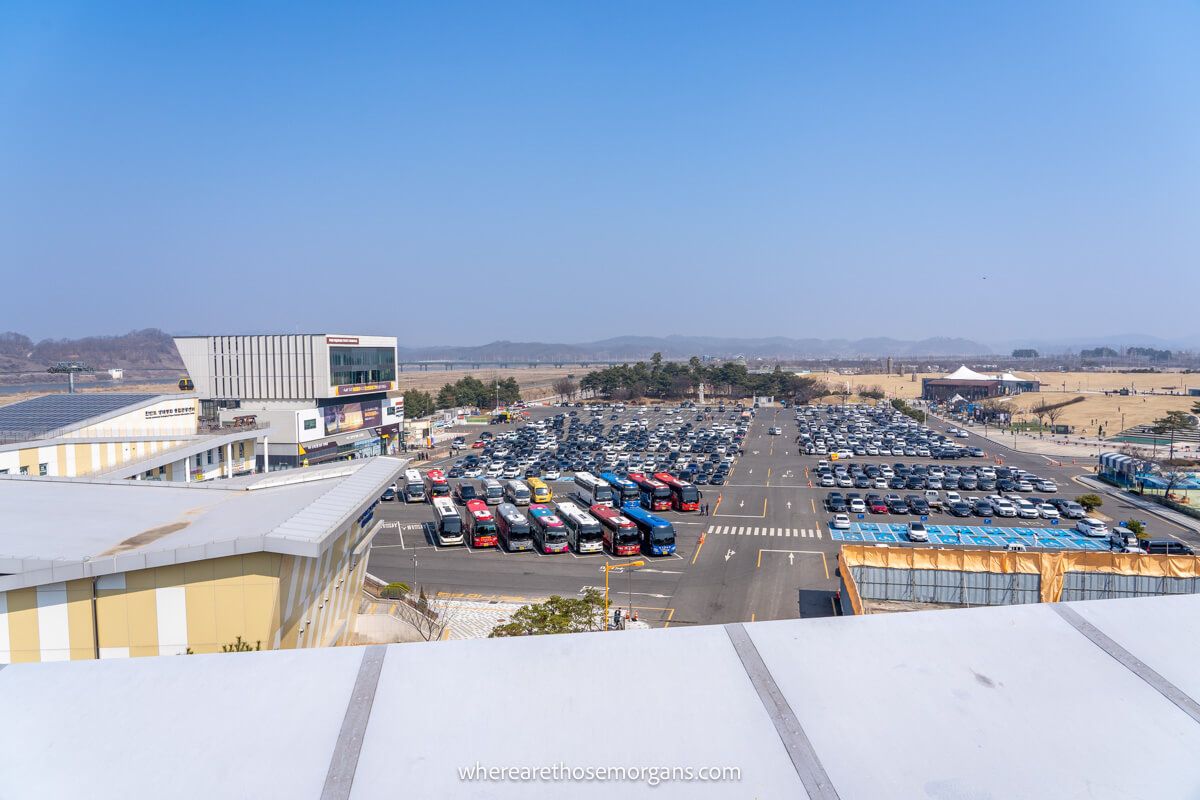
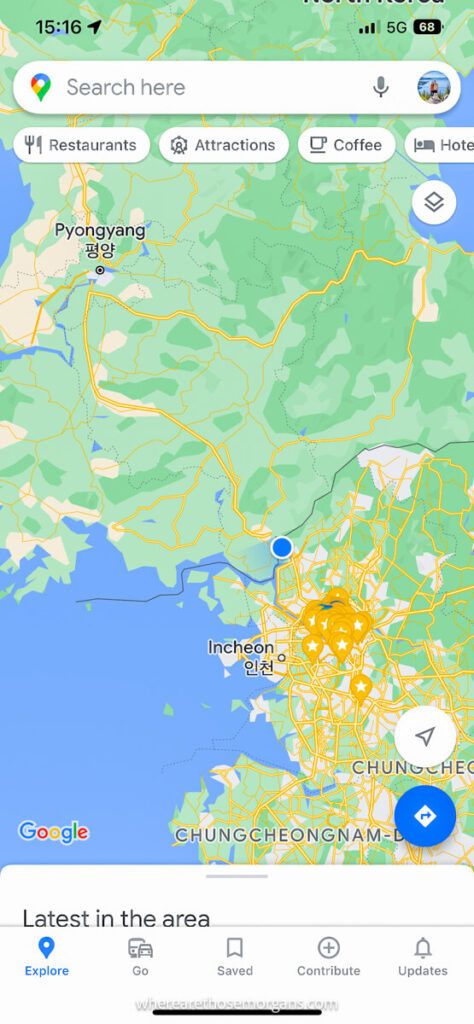
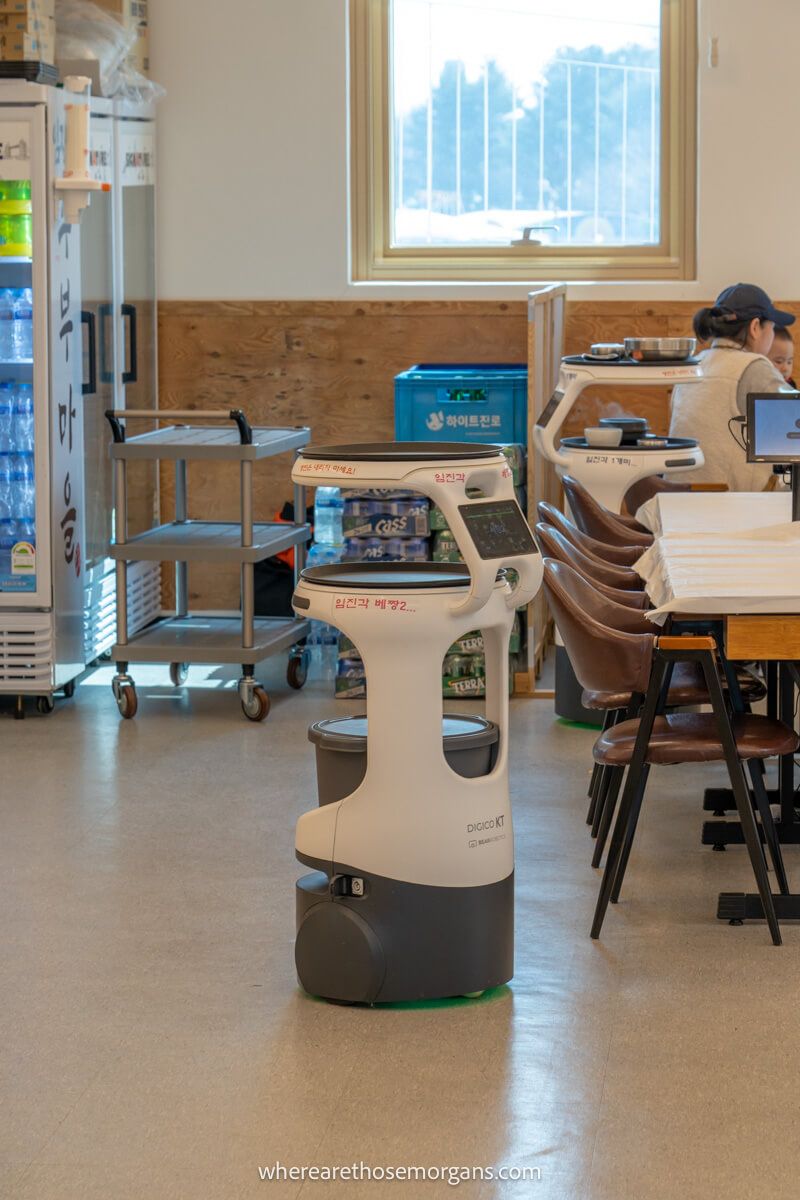
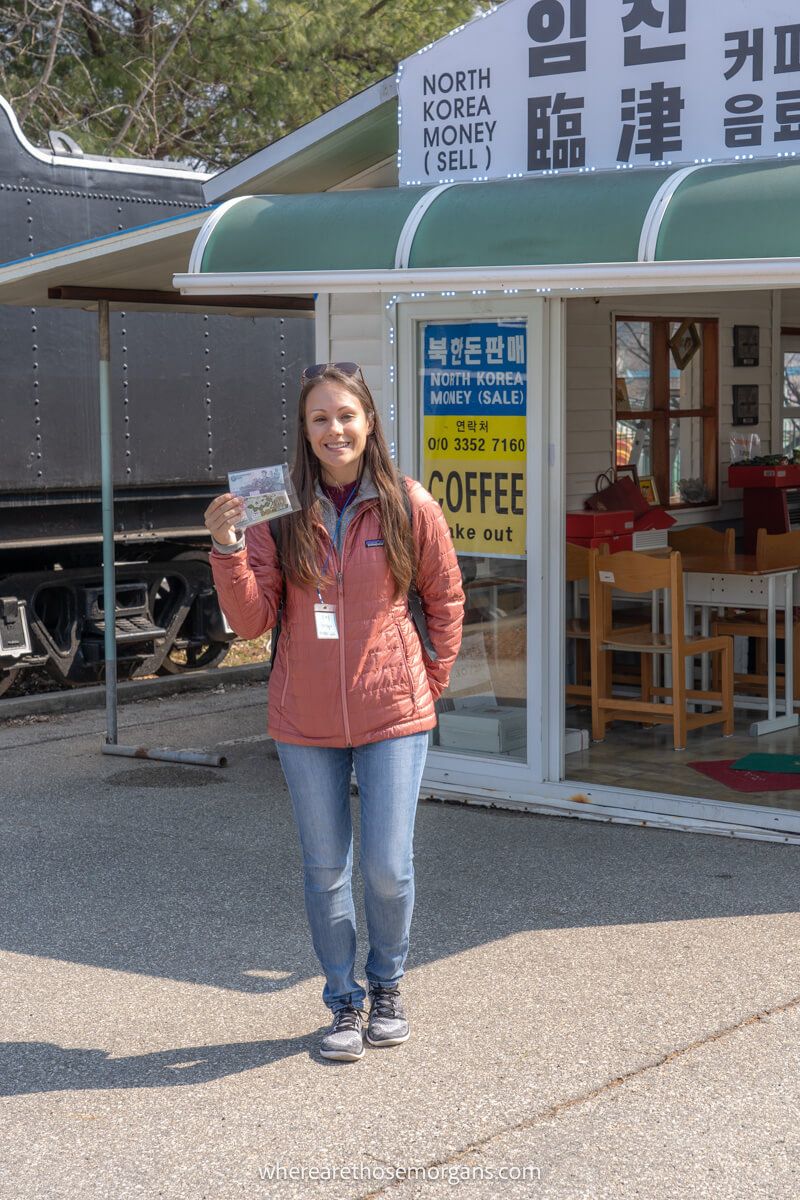
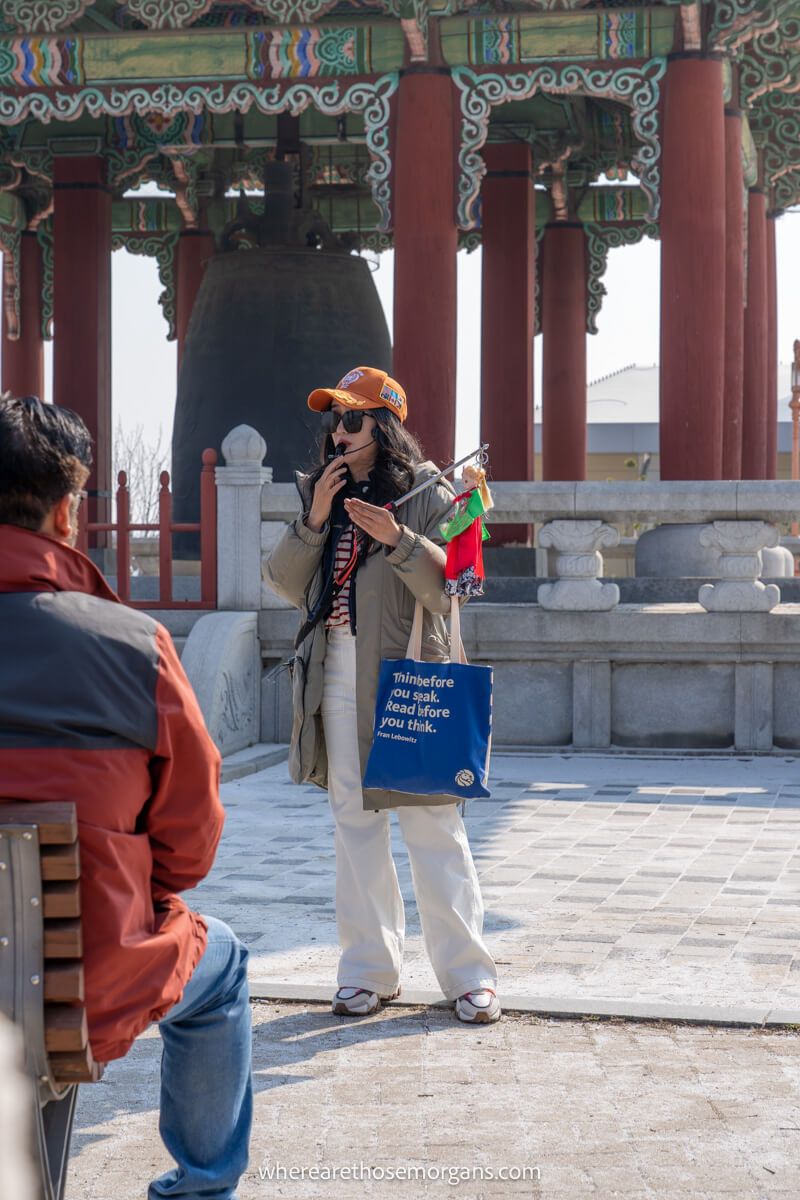
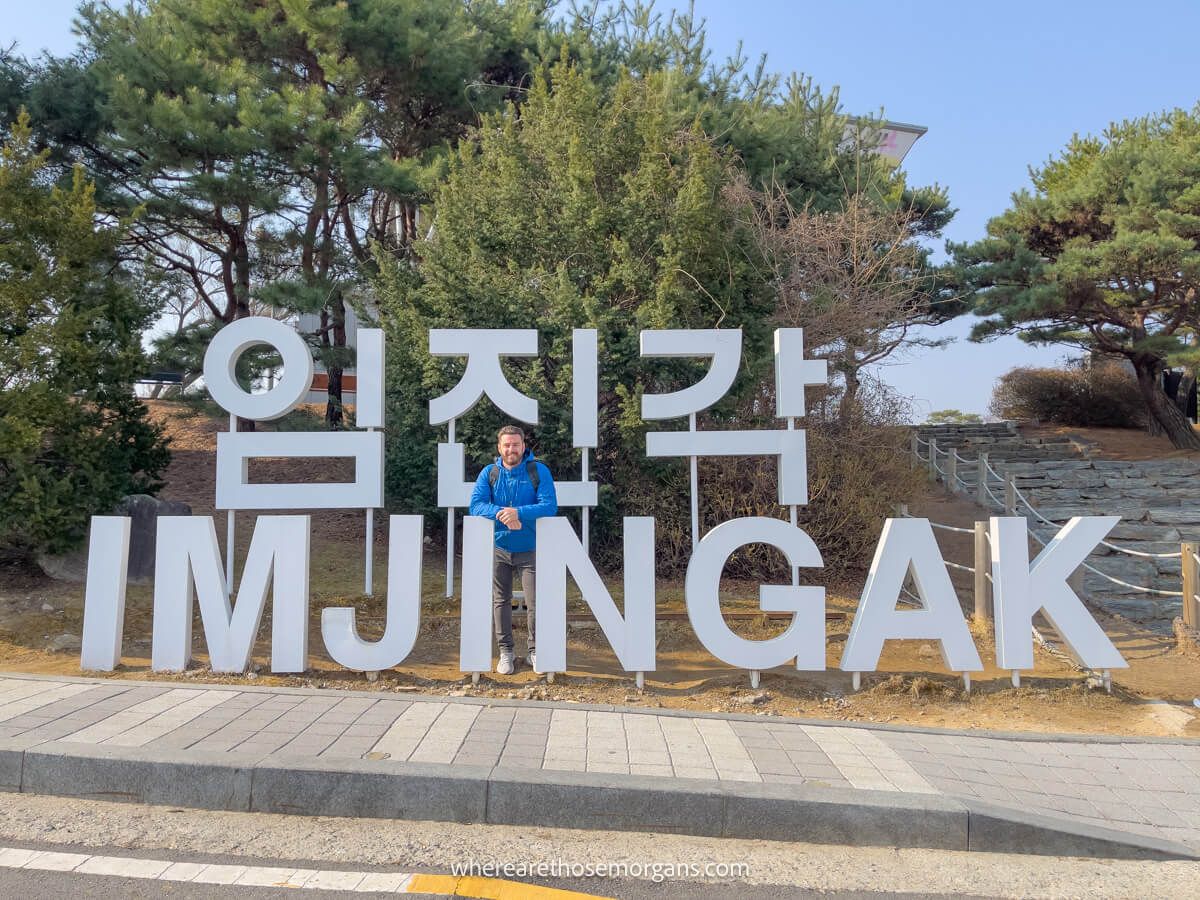
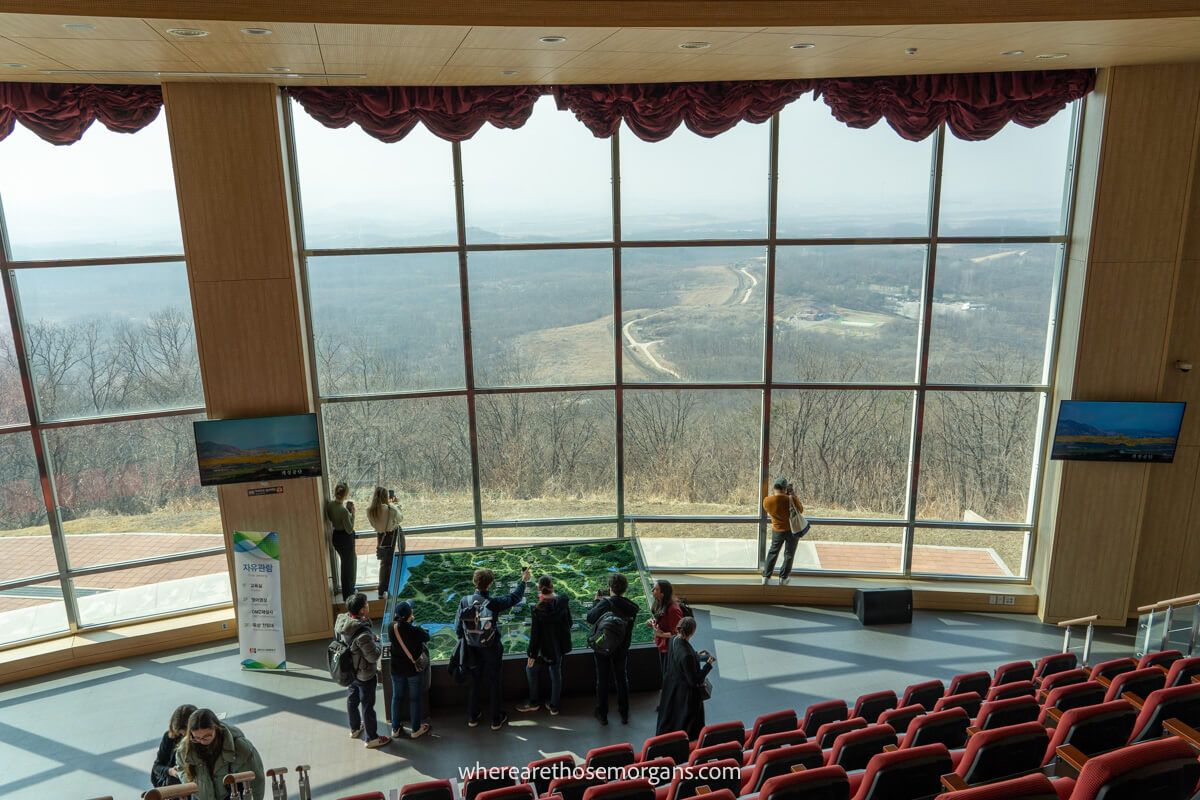
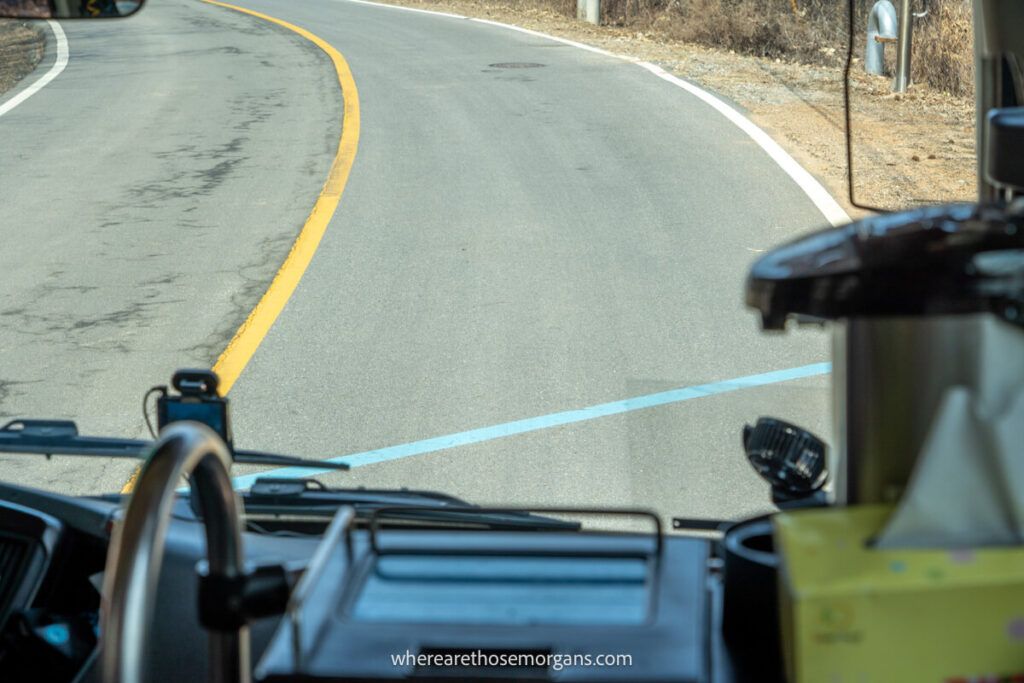
Our Seoul Guides
- 46 cool things to see in Seoul
- Best things to do at Imjingak Park
- How to visit Seoul Sky Observatory
- Guide to visiting N Seoul Tower
- How to visit Gyeongbokgung Palace
- Things to do inside Changdeokgung
- Unique things to see at Huwon Secret Garden
- Best palaces in Seoul to visit
- What to see at the Jongmyo Shrine
- How to visit the Seodaemun Prison
- 20 best hotels in Seoul South Korea
Want more Seoul content? Head over to our South Korea Travel Guides to explore the very best of Seoul and beyond.
We hope this detailed review about our DMZ tour helps you decide if this attraction should be included on your Seoul Itinerary!
Please let us know if you have any questions about the South Korea DMZ tour or traveling through Seoul in the comments below.
Happy Travels,
Mark and Kristen
Enjoy this DMZ tour review? Pin it for your trip!

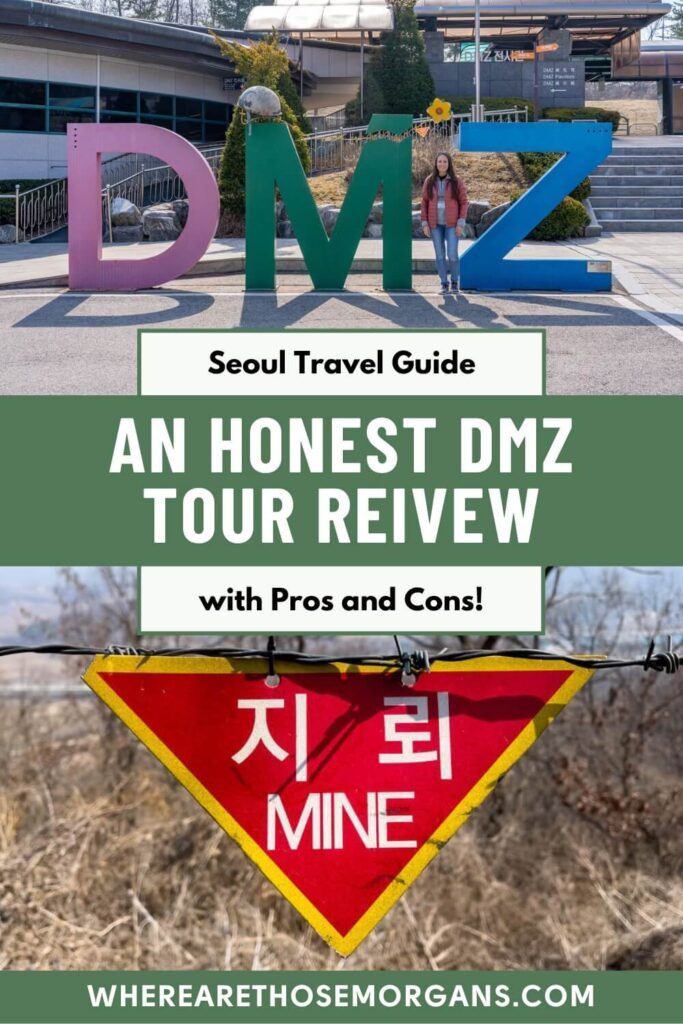
Note: This article contains affiliate links. When you make a purchase using one of these affiliate links, we may earn a small commission at no extra cost to you.
All Rights Reserved © Where Are Those Morgans, LLC. Republishing this article and/or any of its contents (text, photography, maps, graphics, etc.) in whole or in part is strictly prohibited.
Mark and Kristen Morgan are travel, hiking and photography experts. Over the last 6 years traveling full time, they have explored more than 40 countries and 30 US states.
Where Are Those Morgans has been featured in USA Today, Gestalten, Get Your Guide, CityPASS and Condé Nast Traveler along with various other publications. Read more about us.

